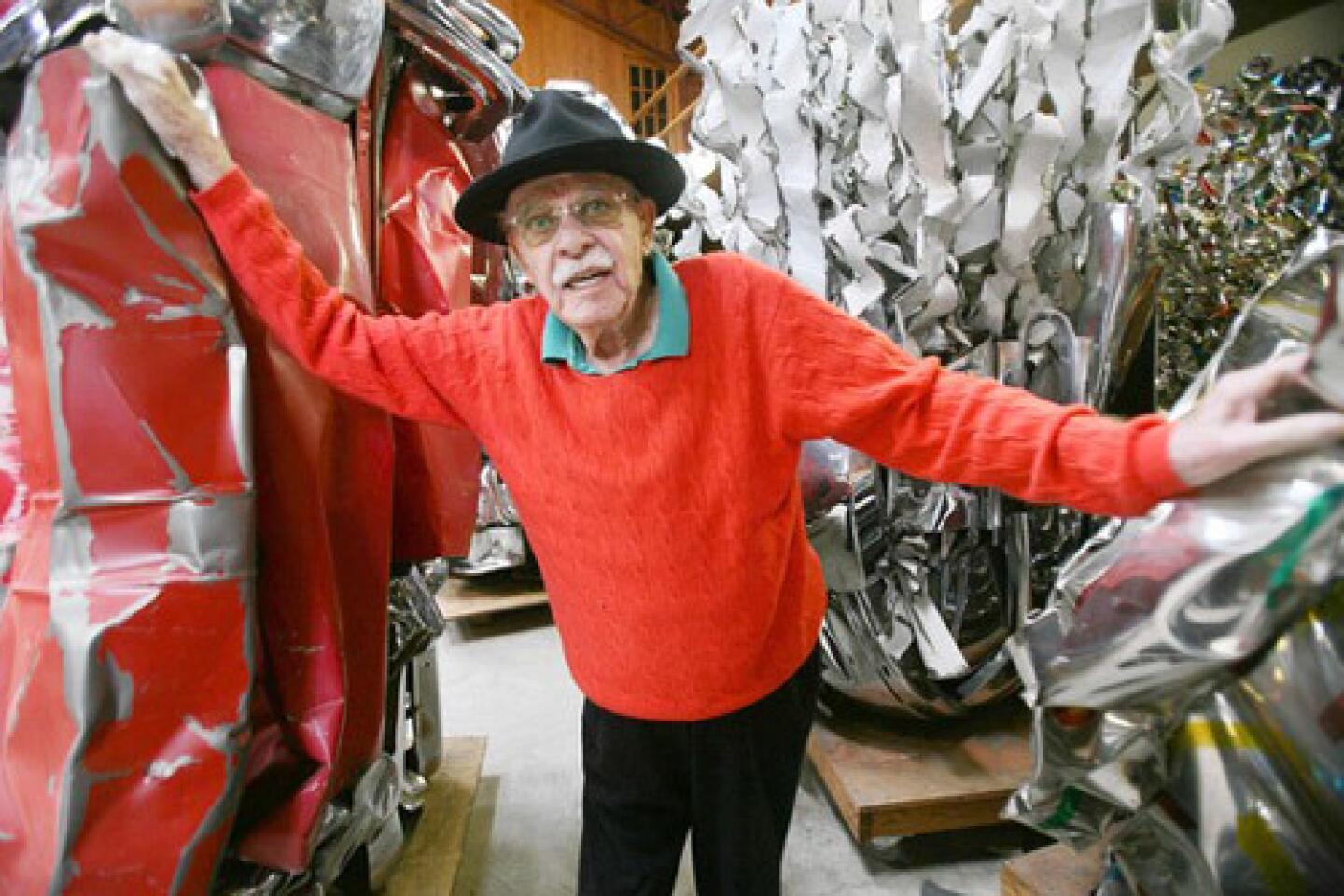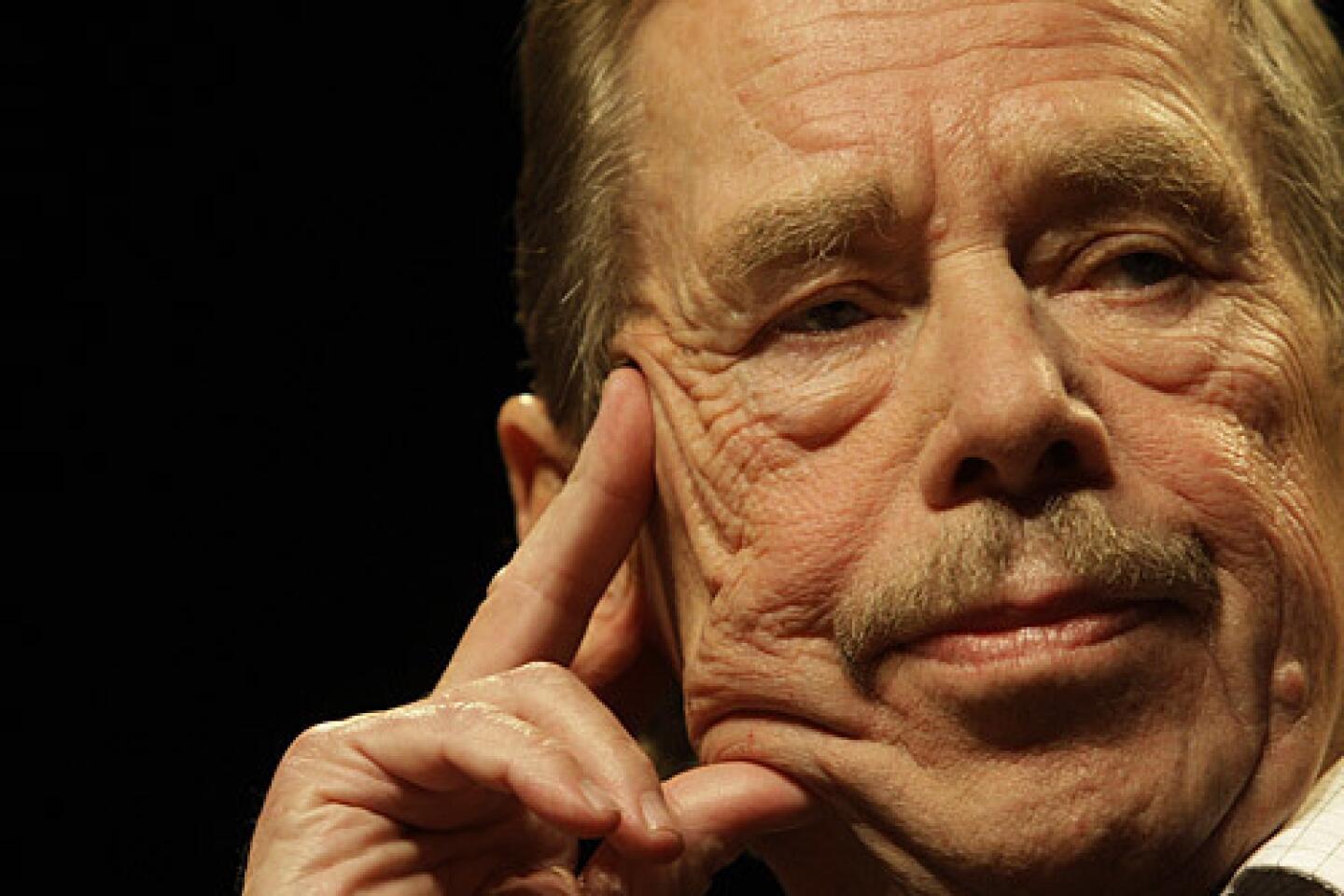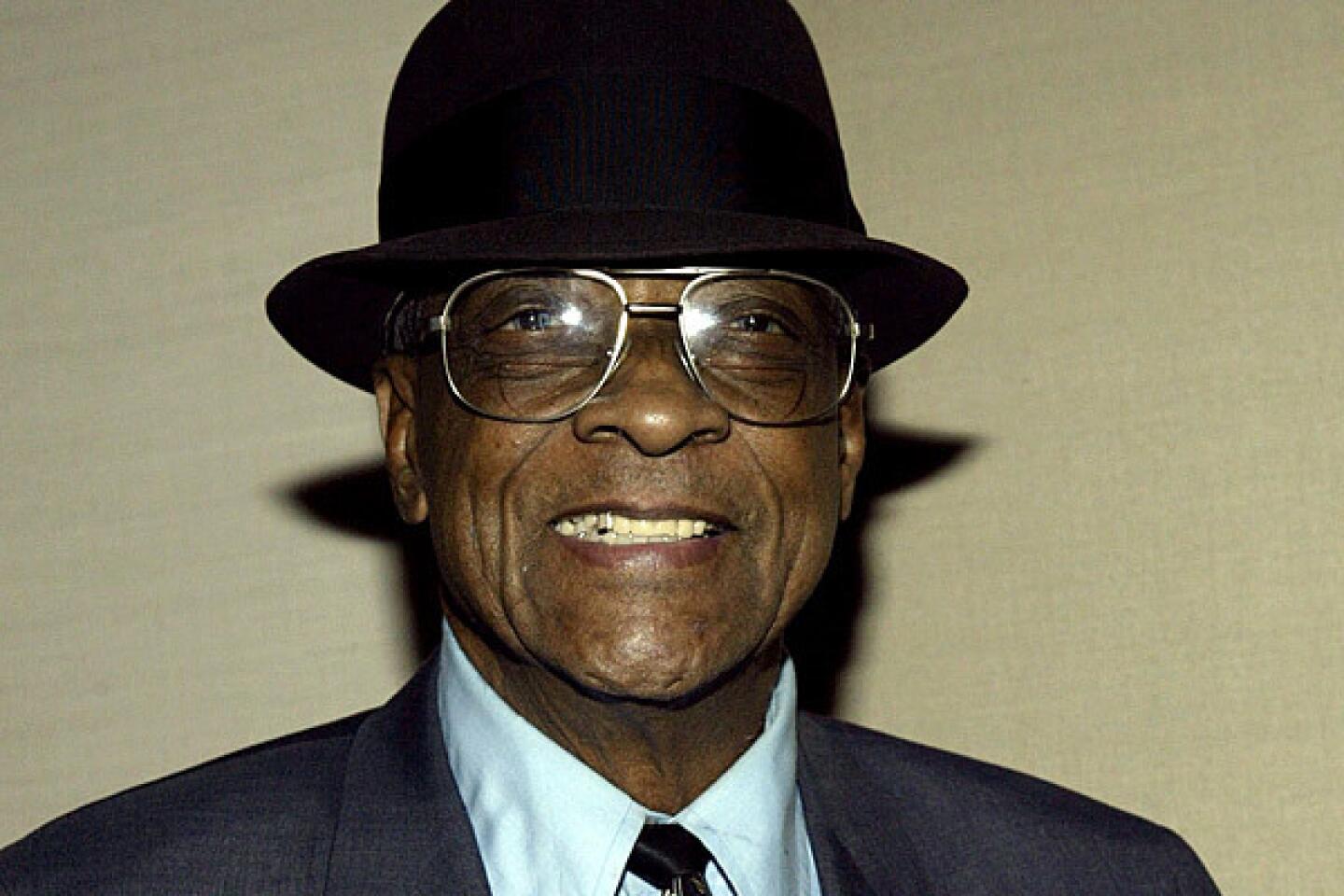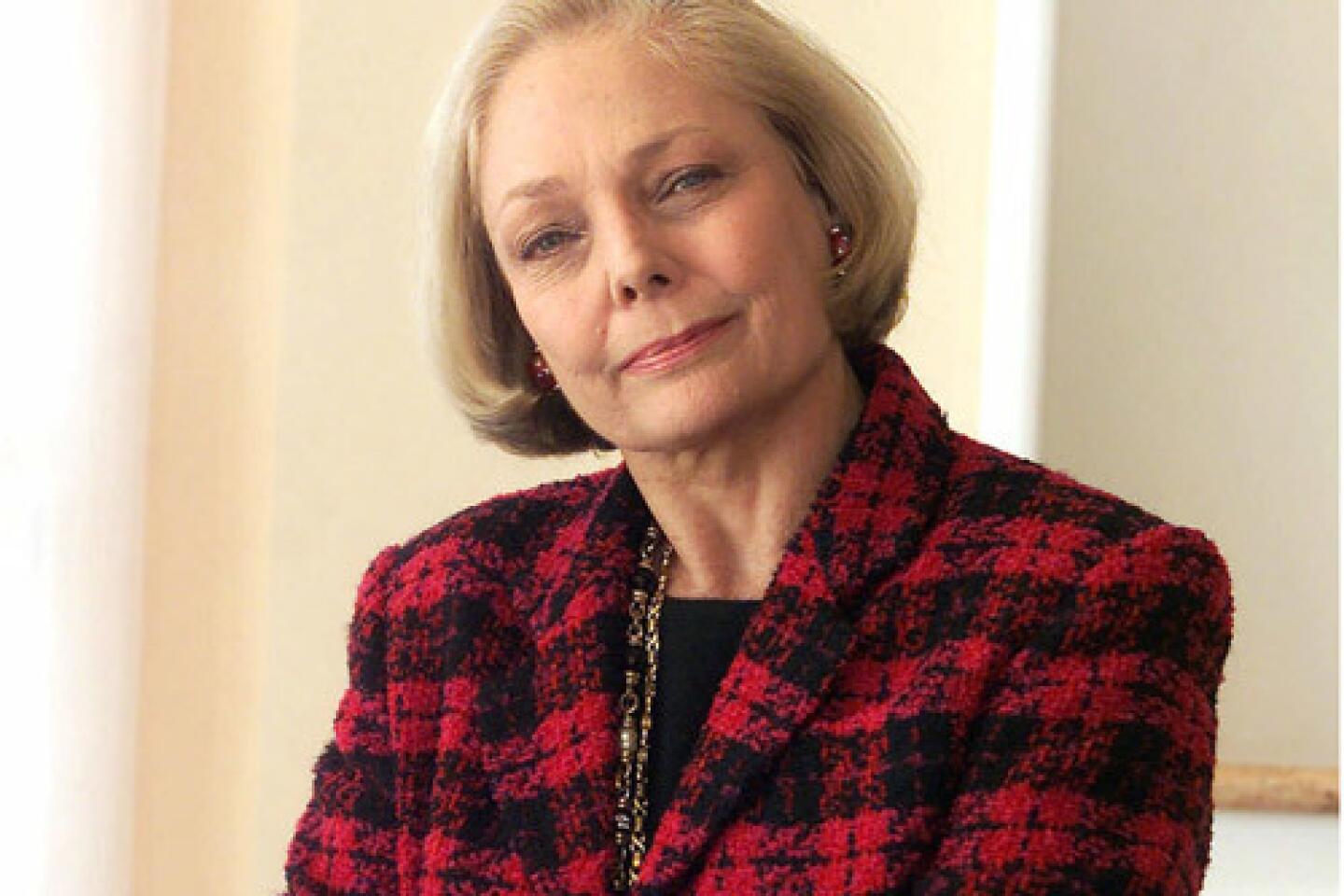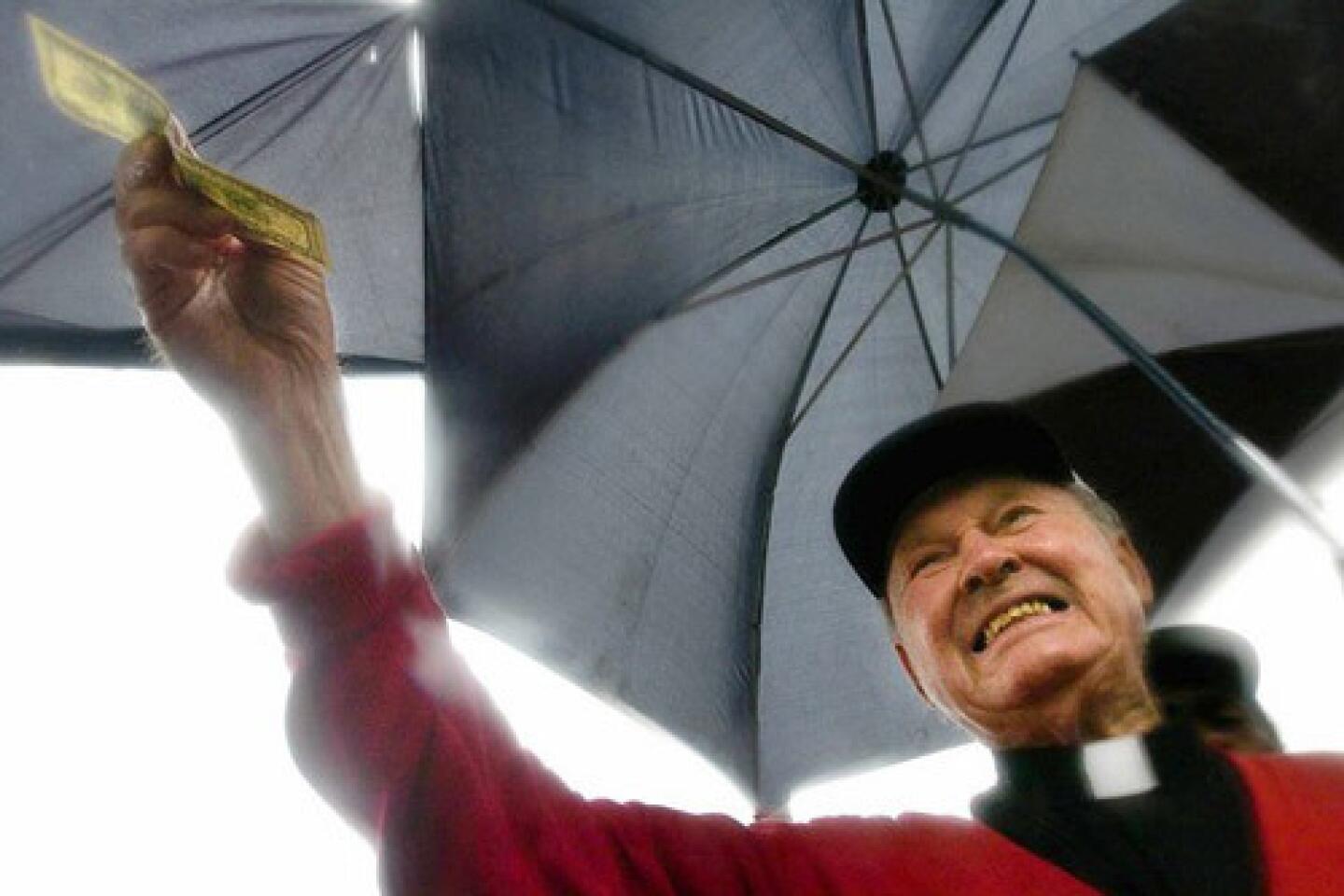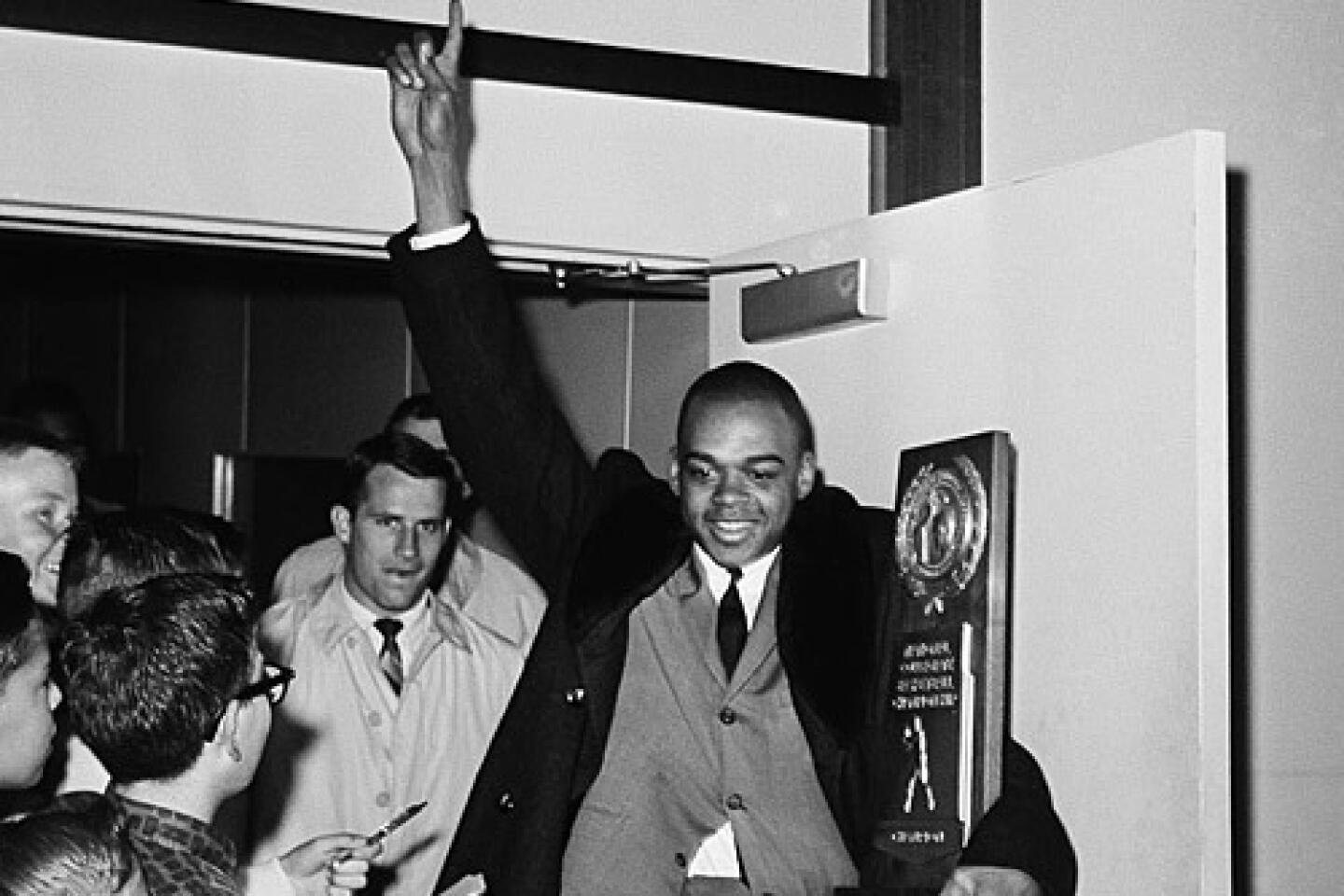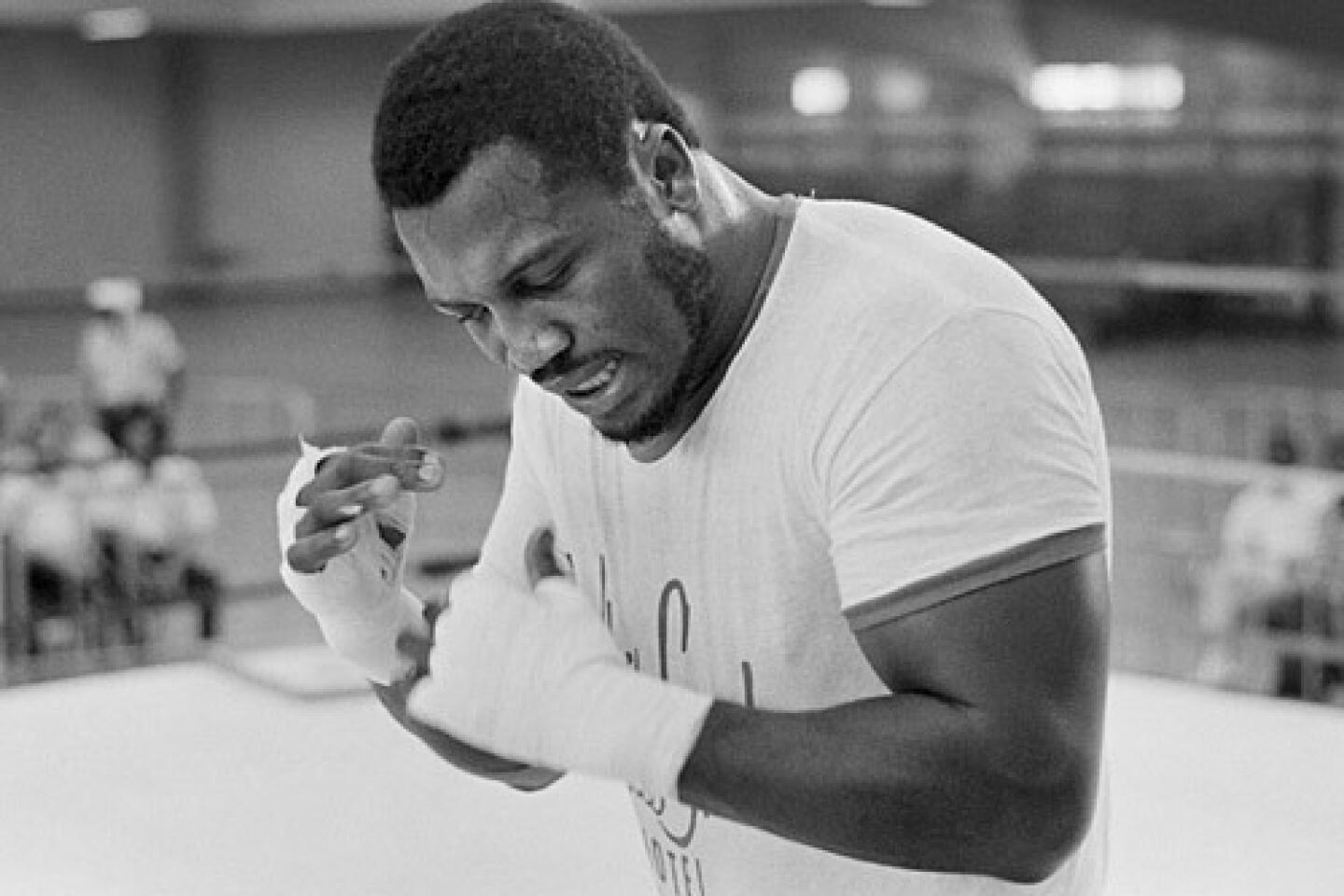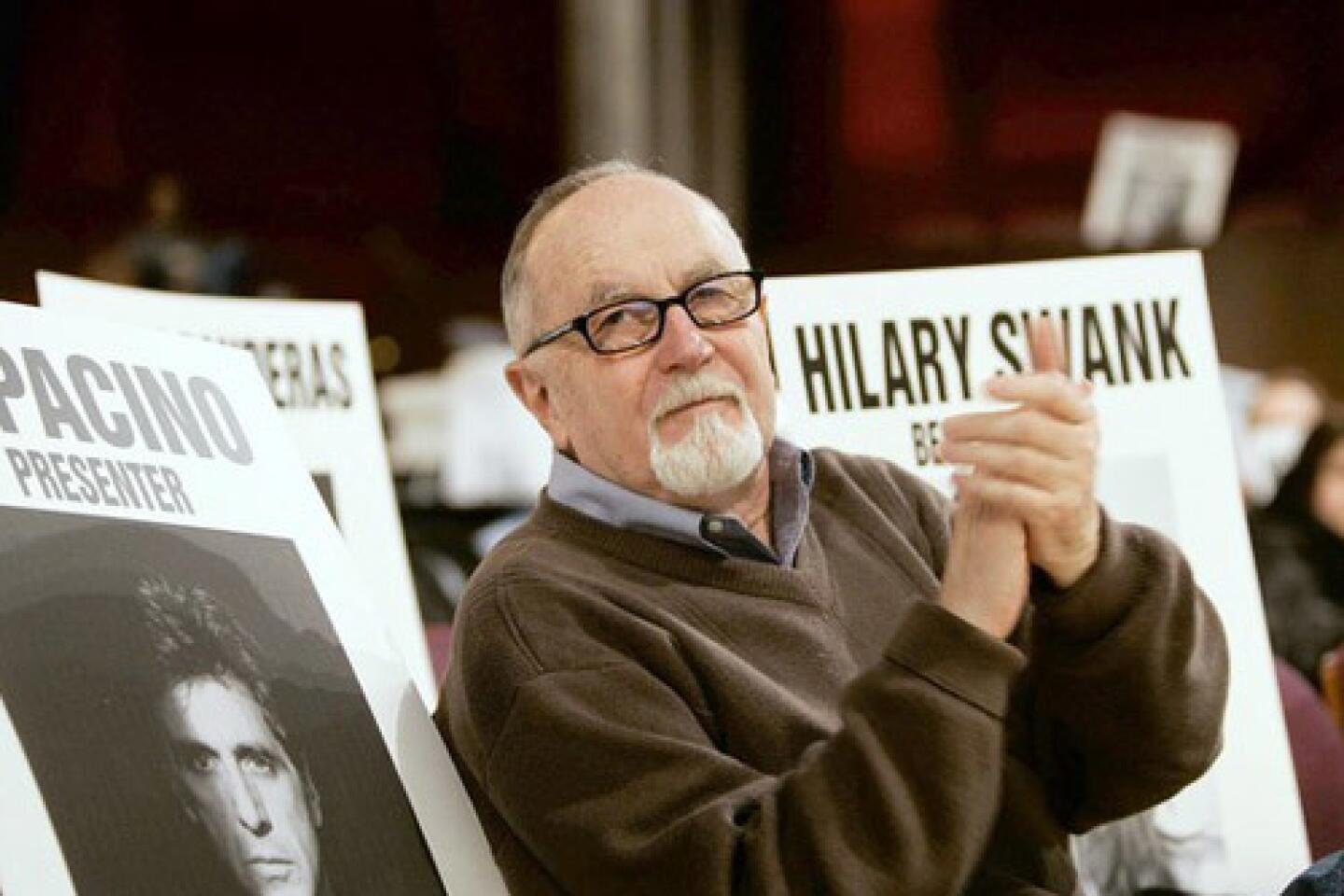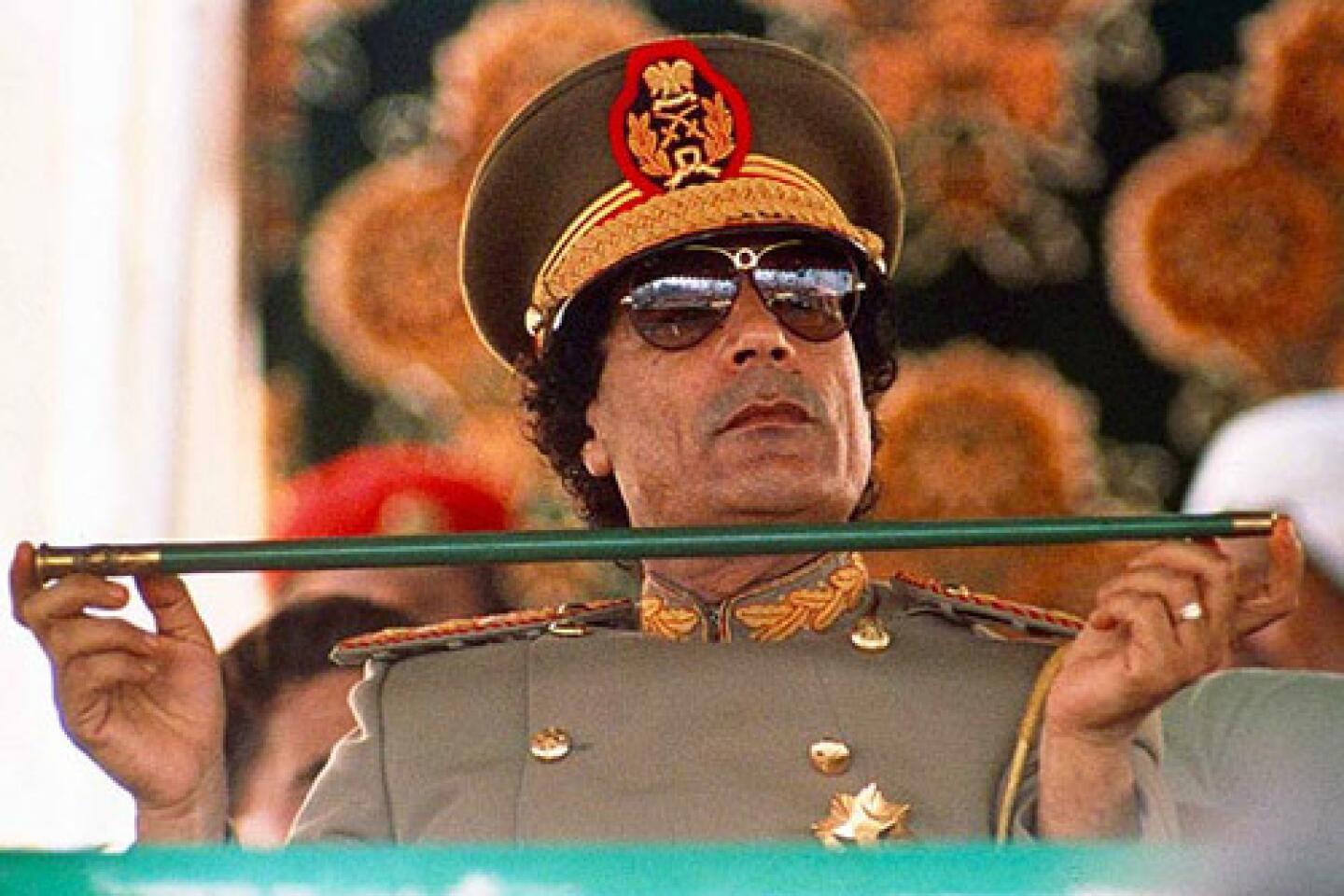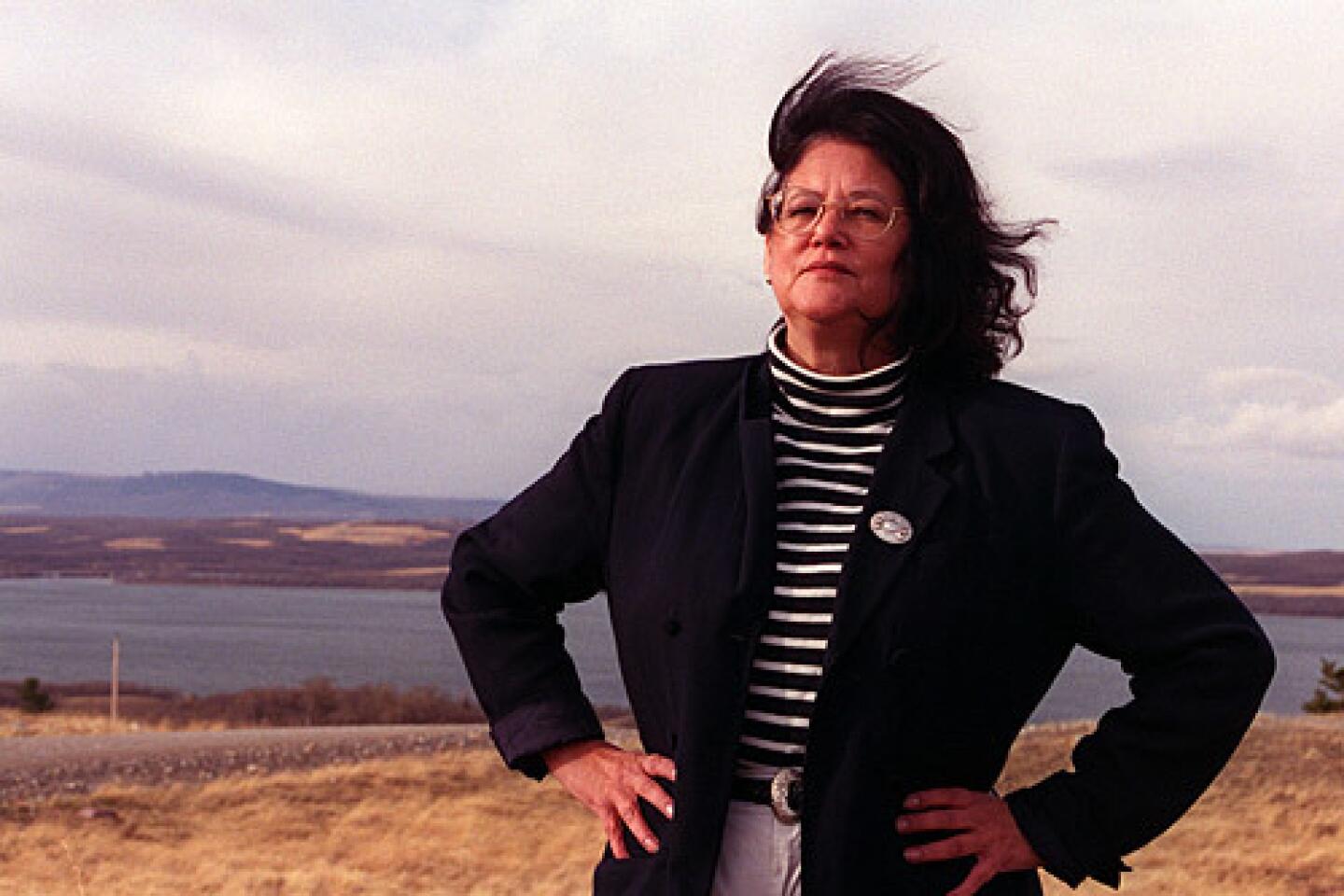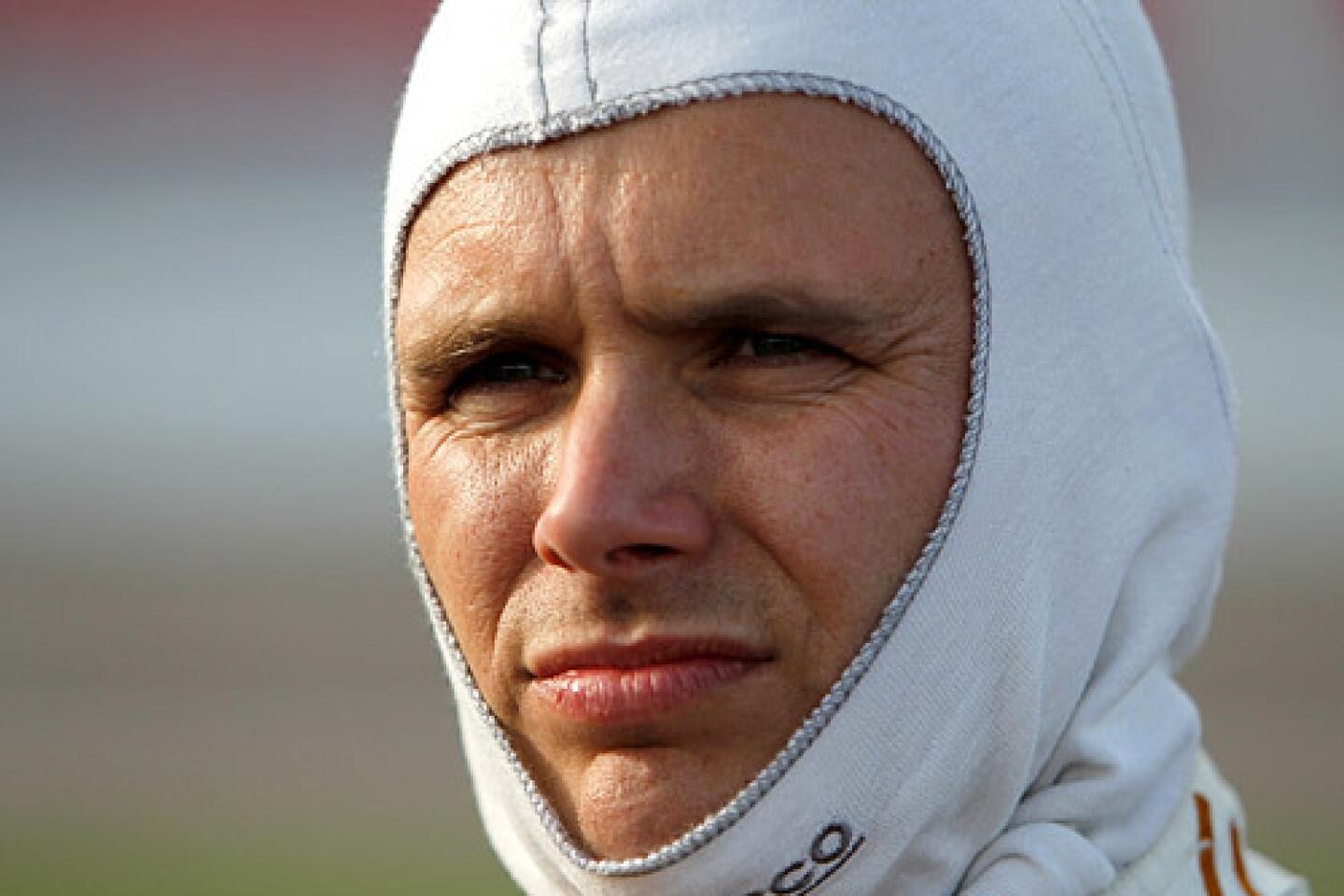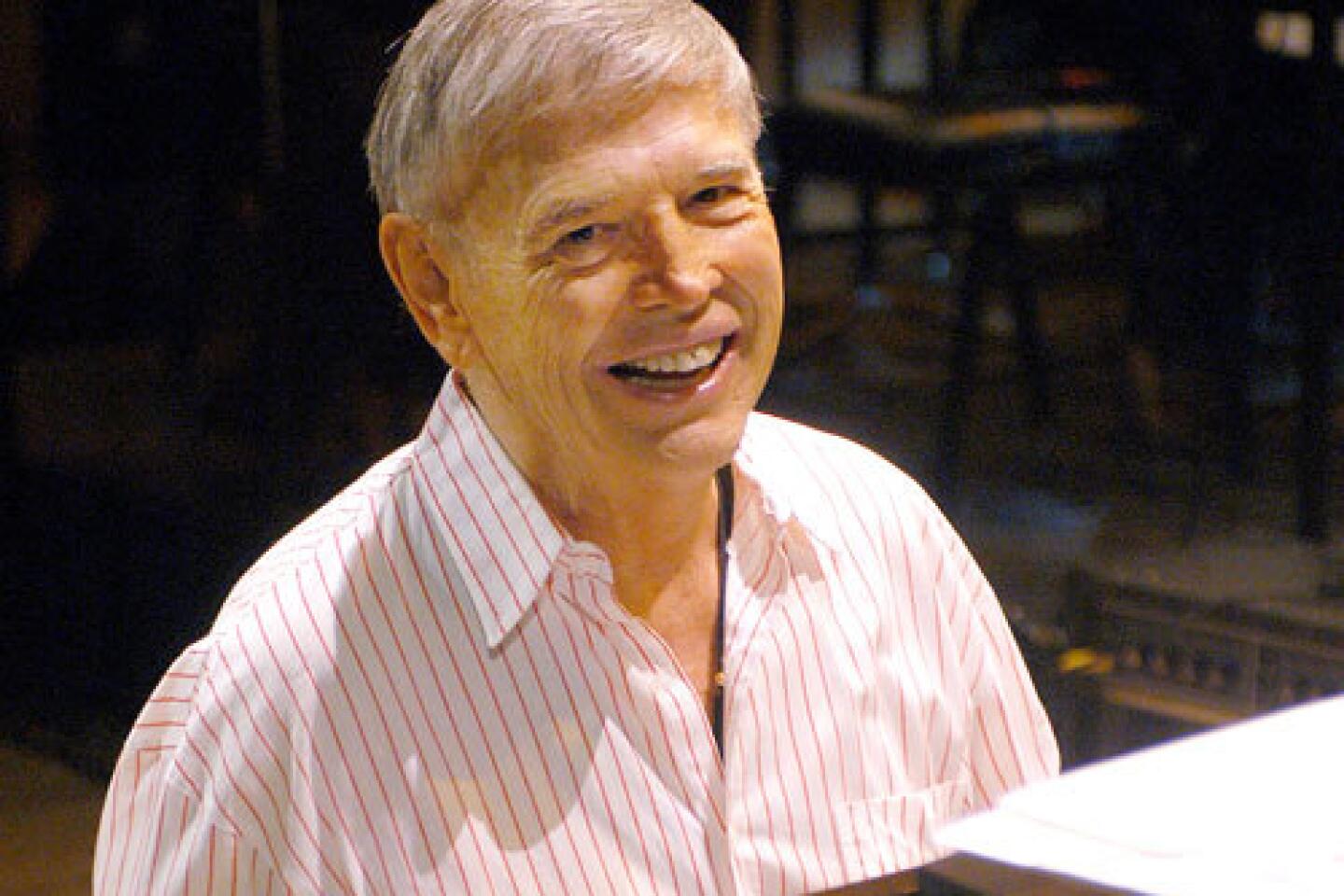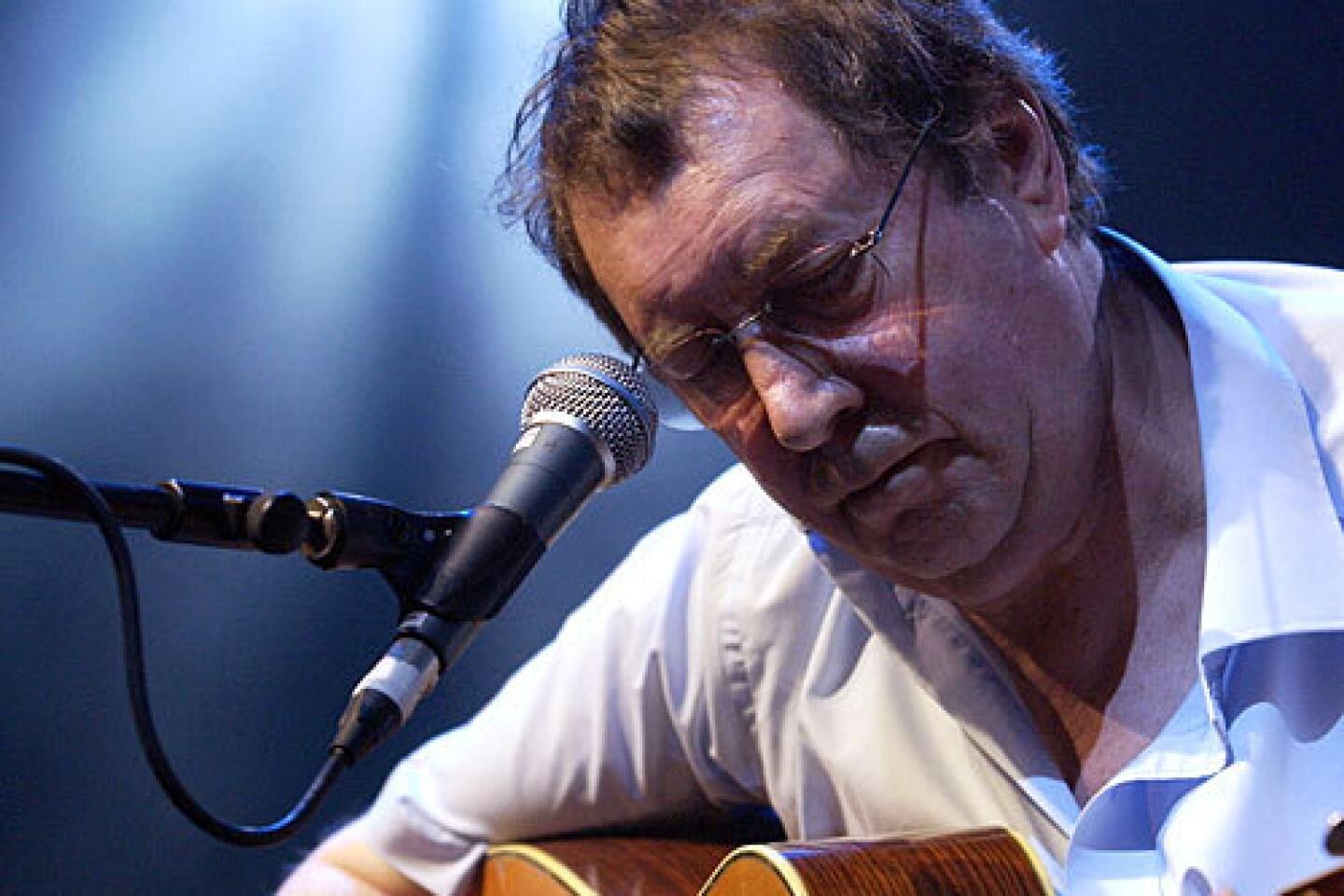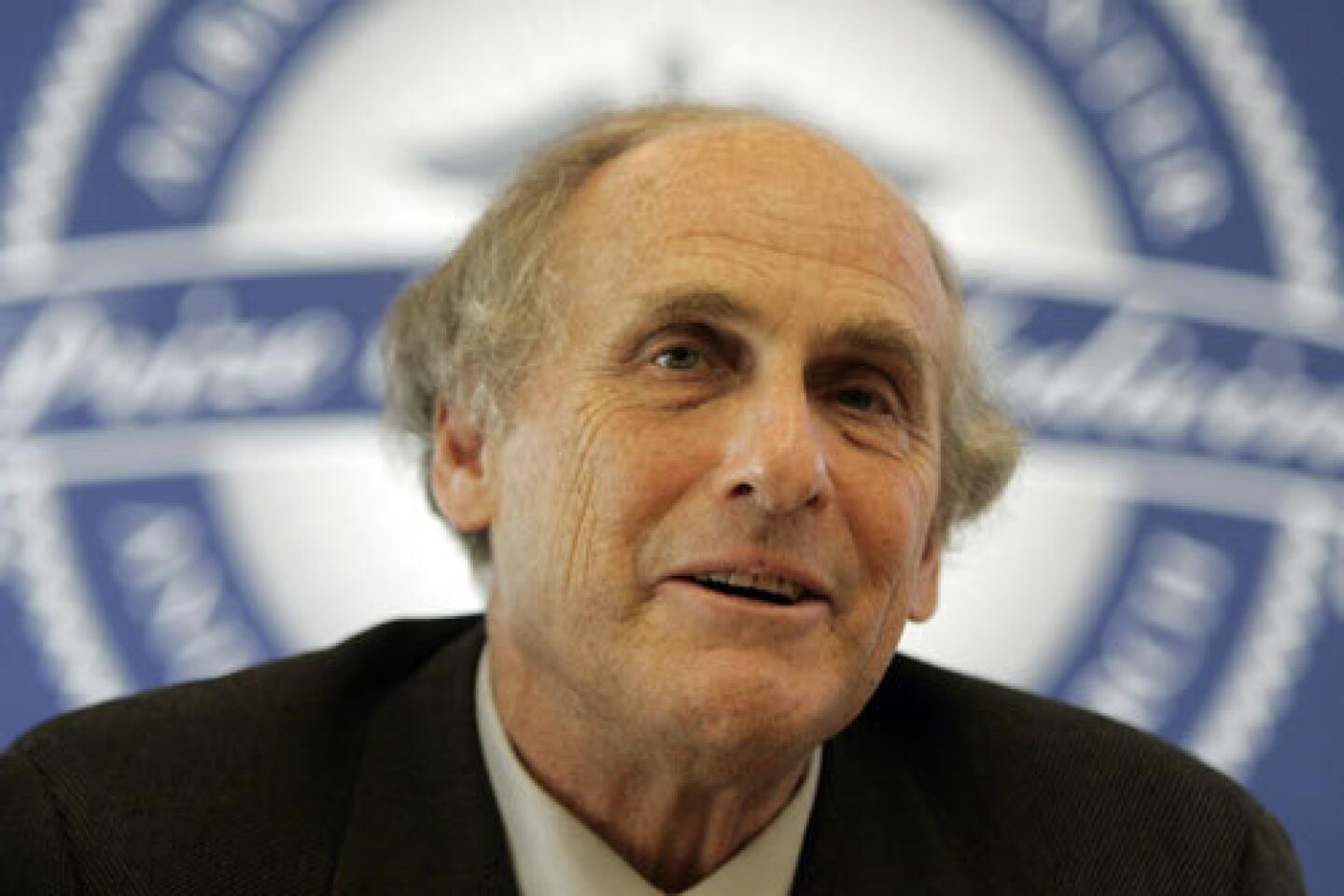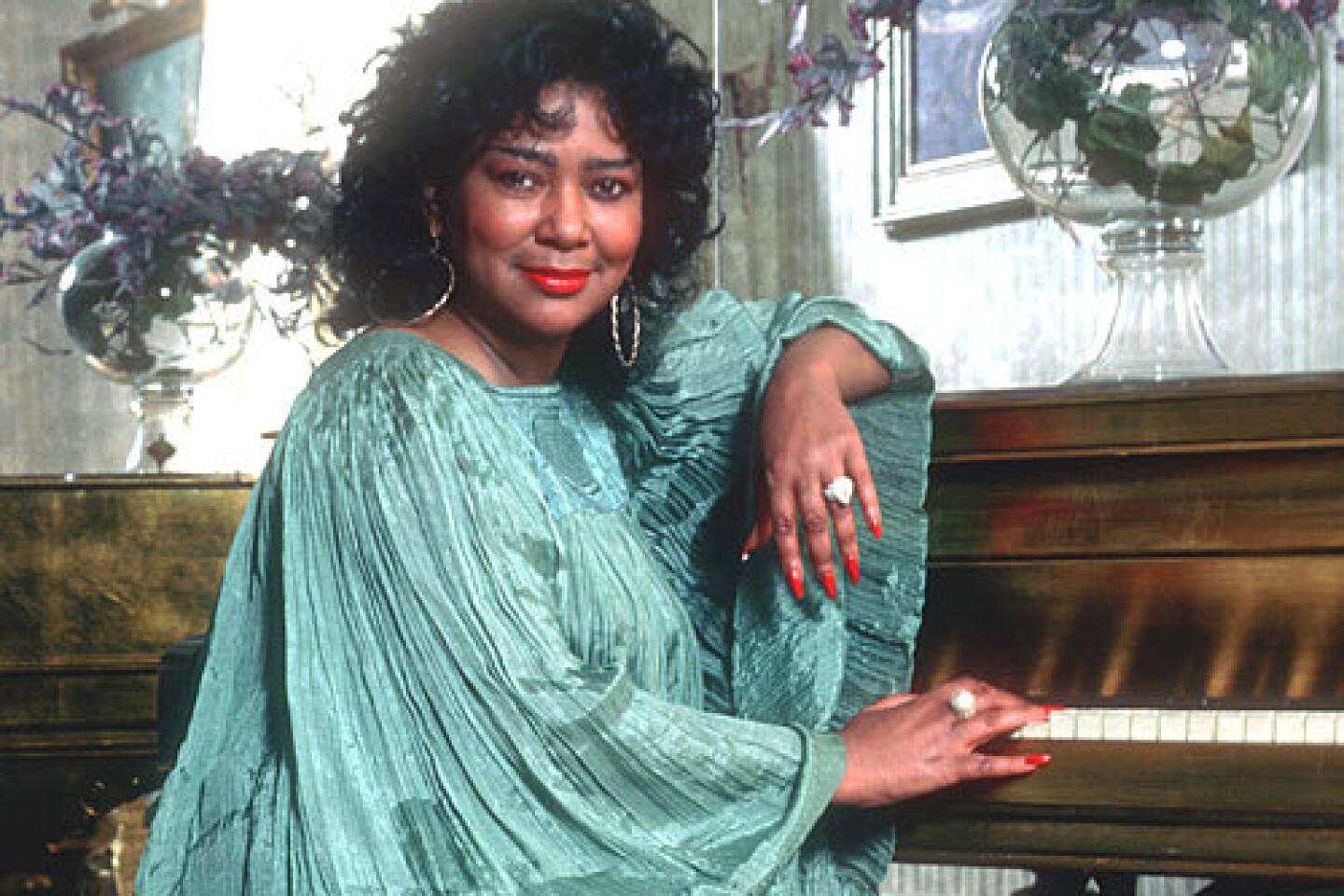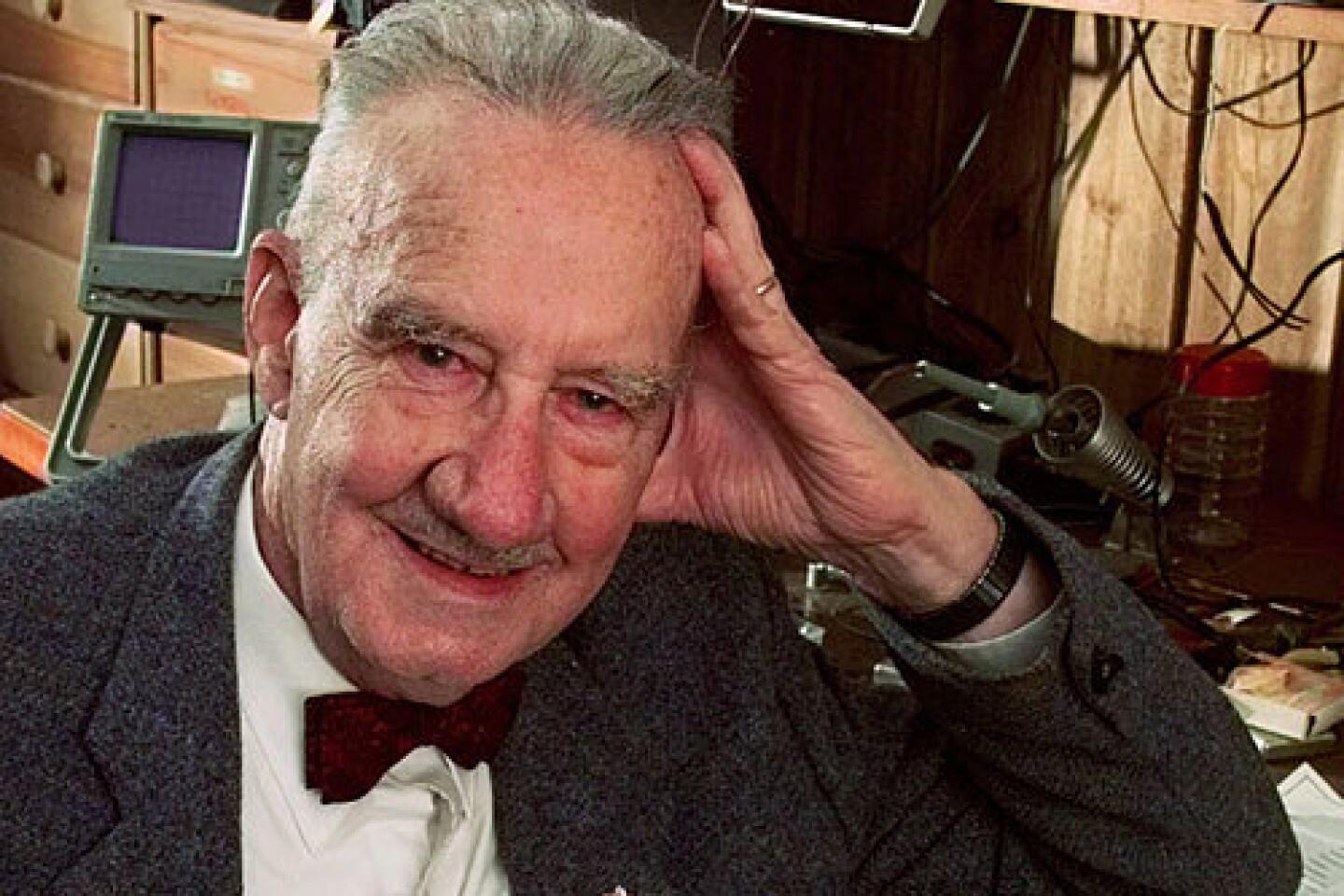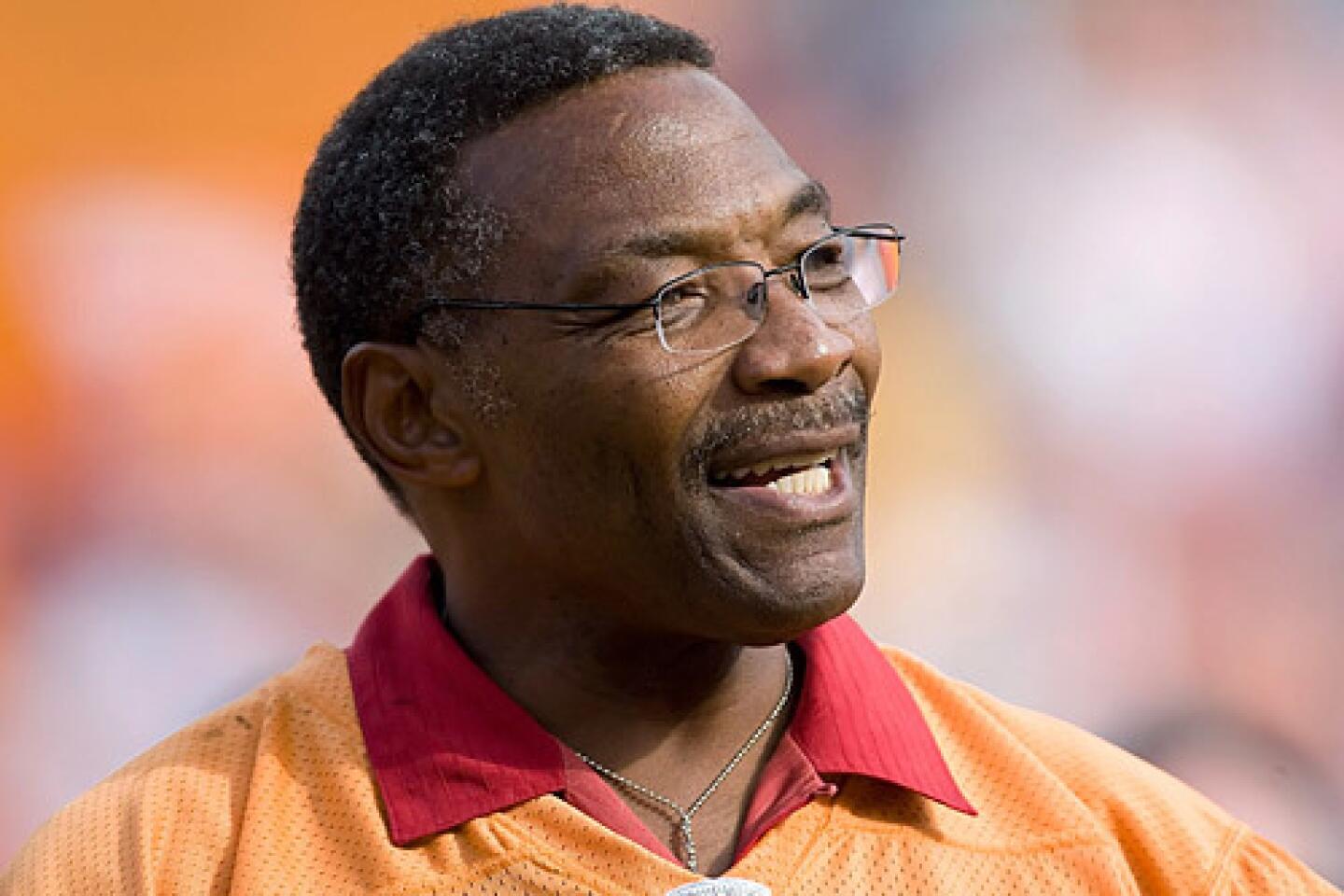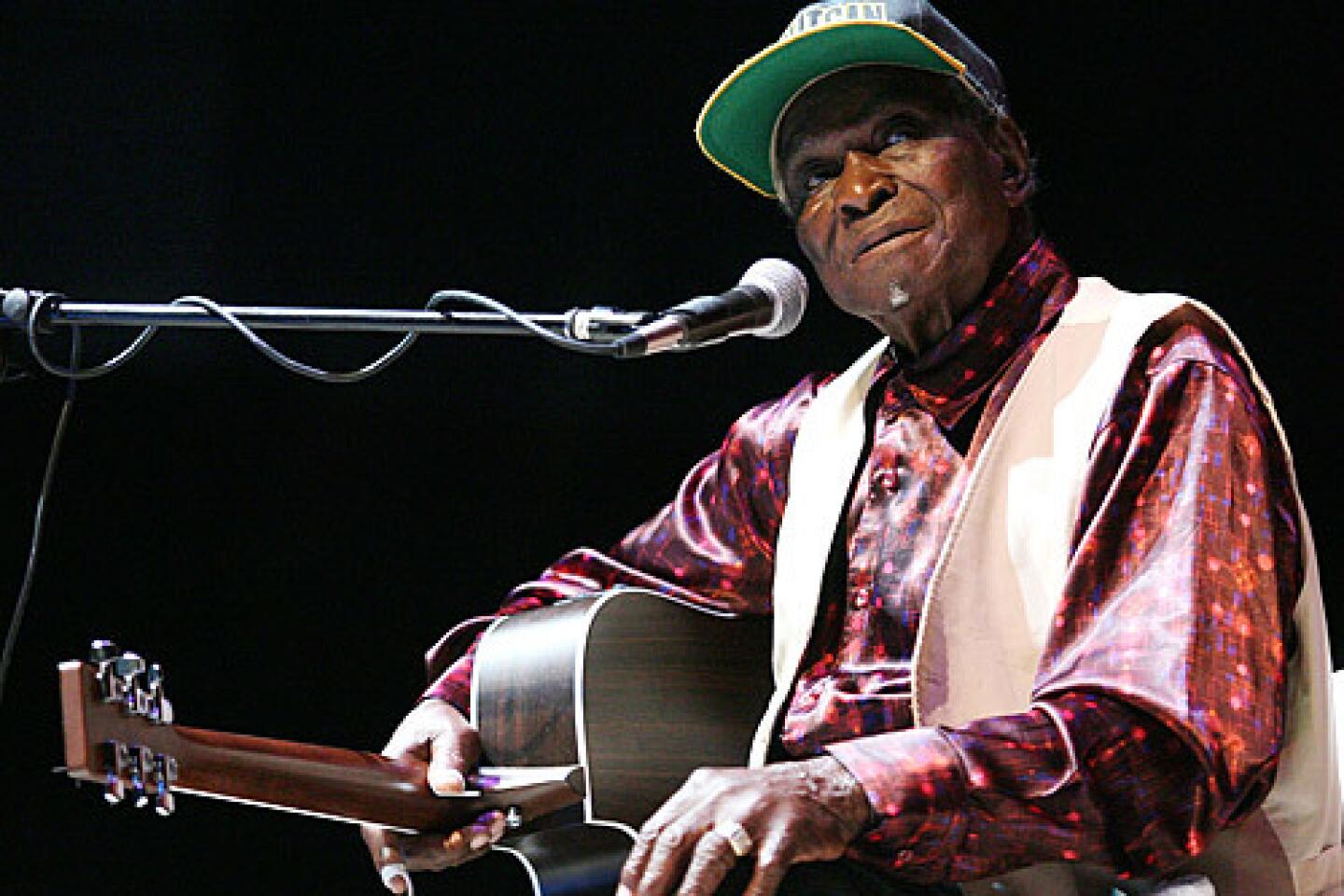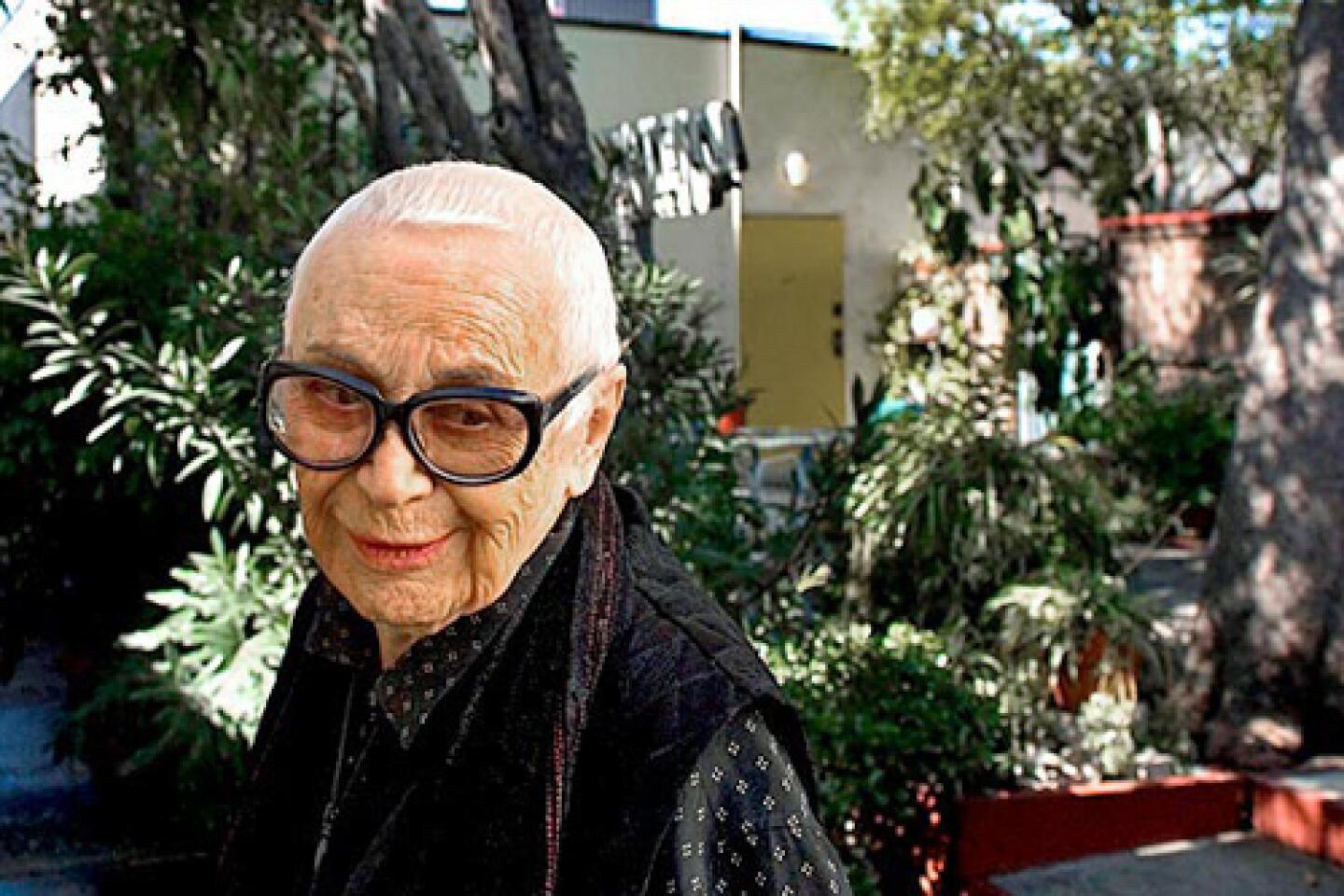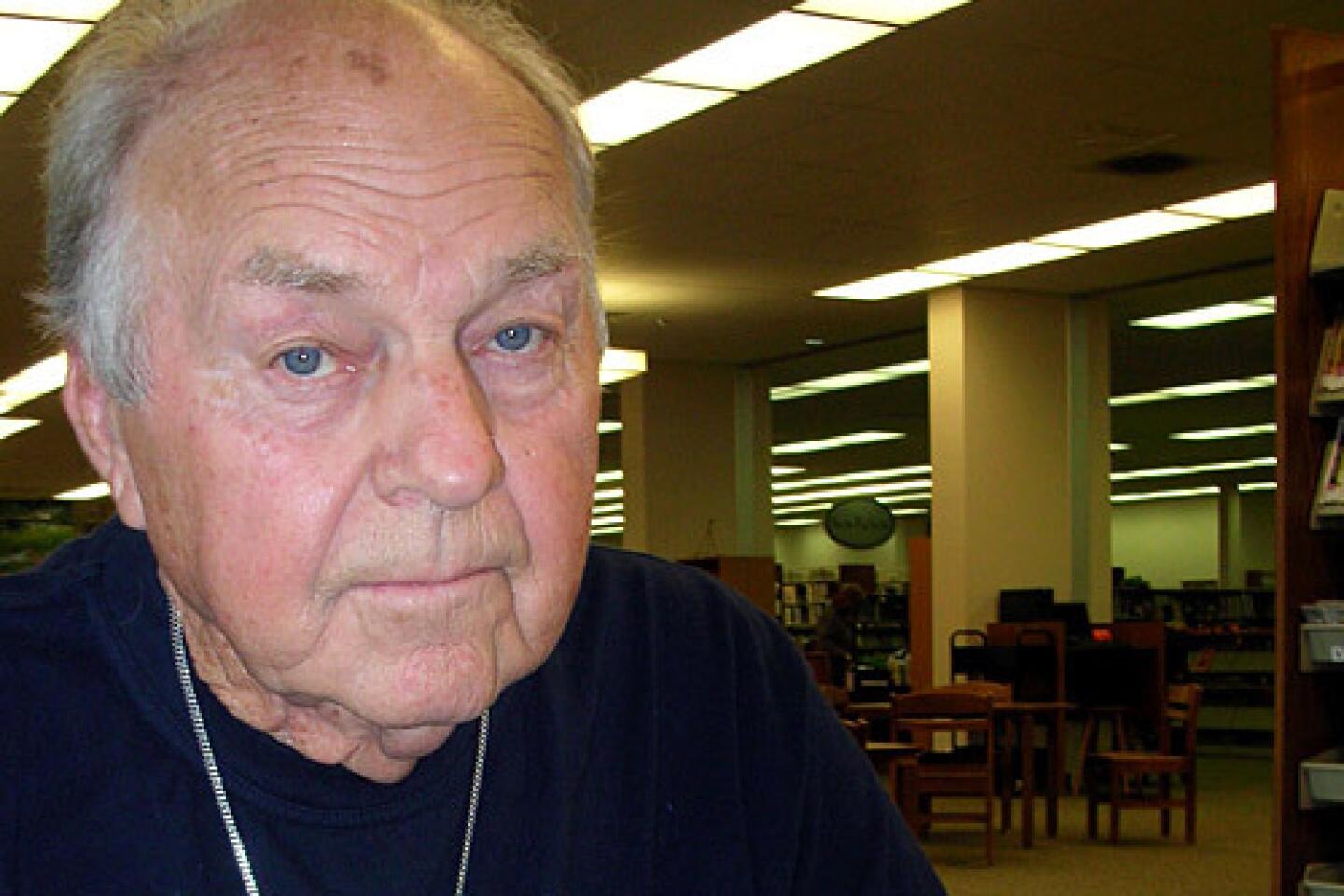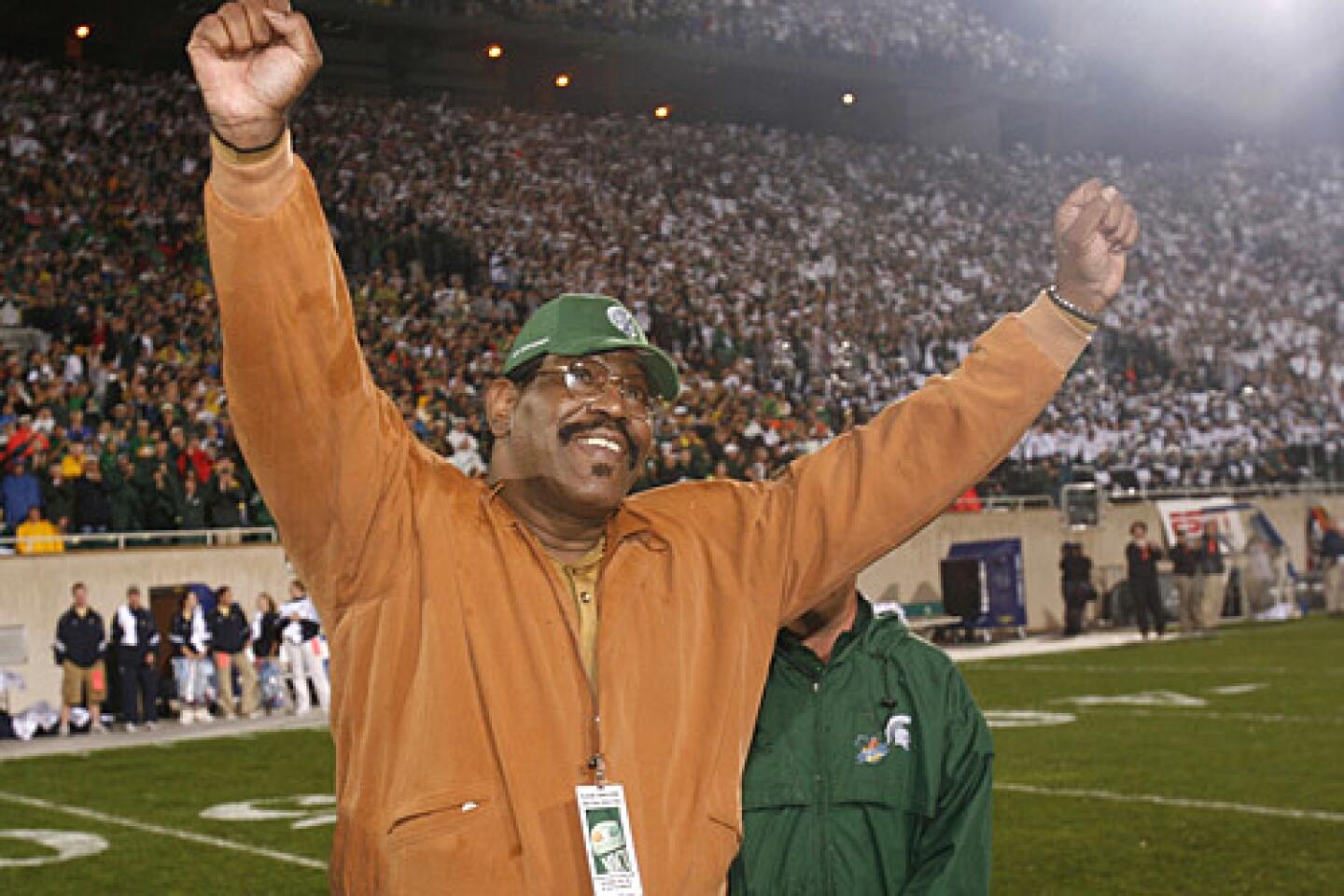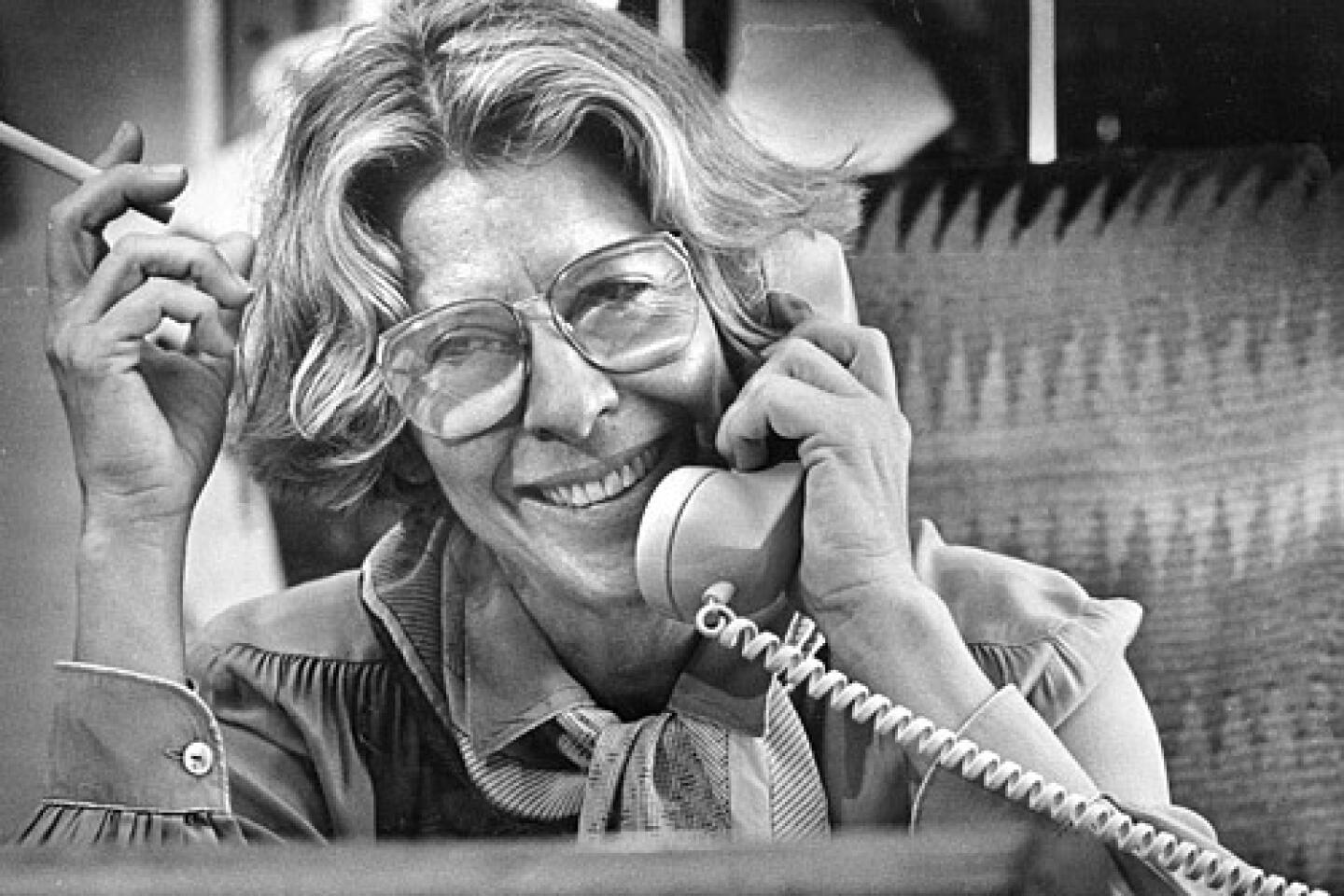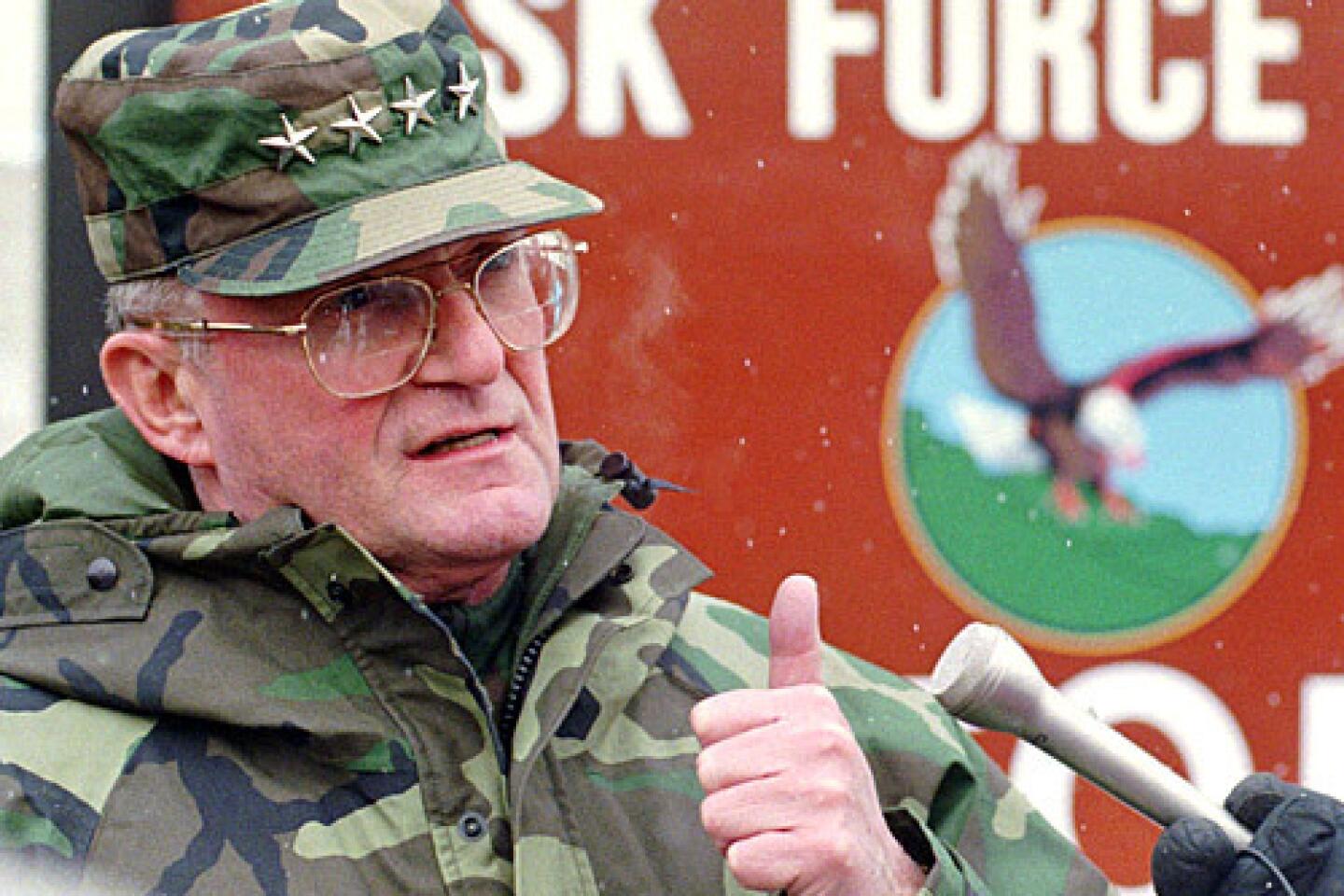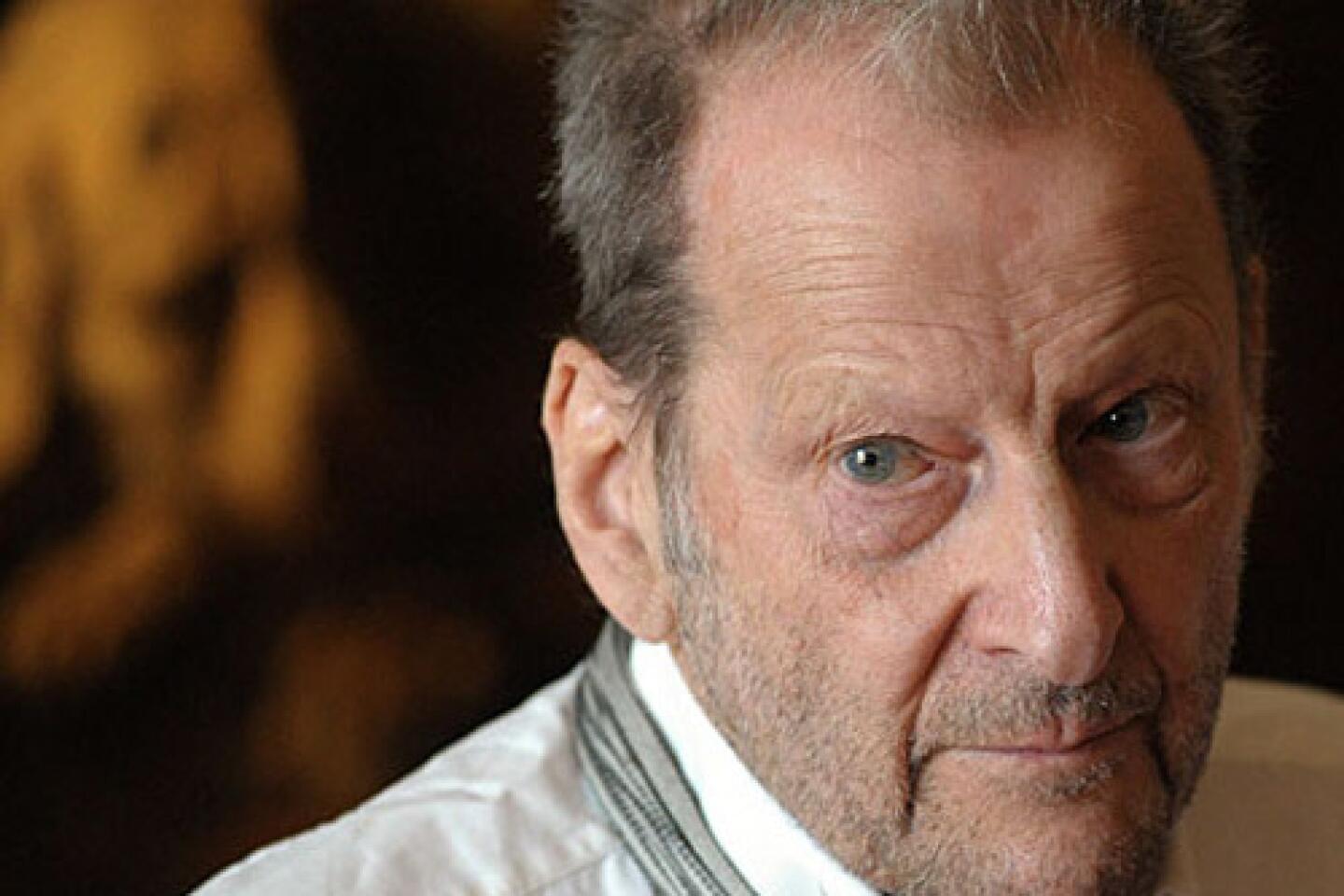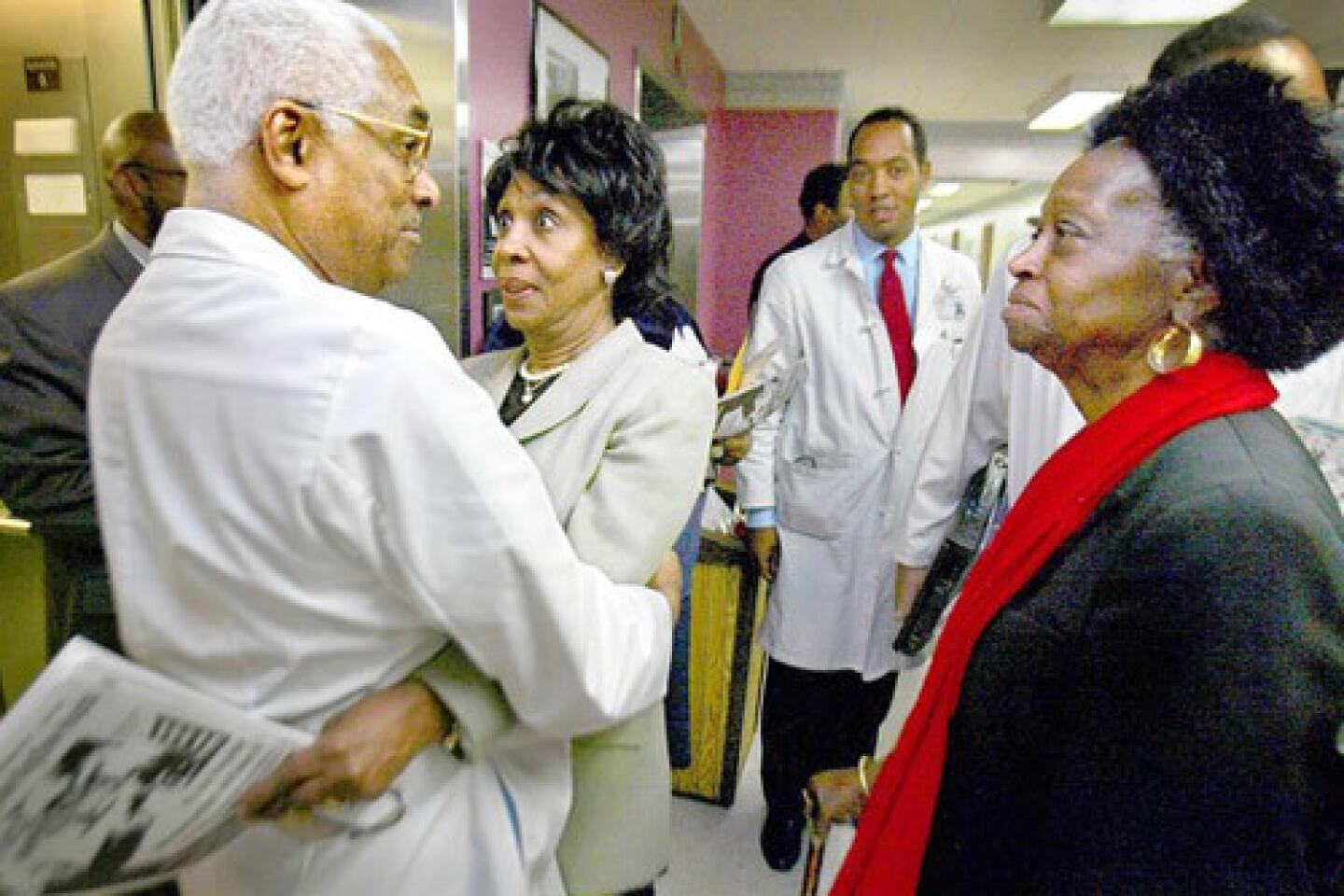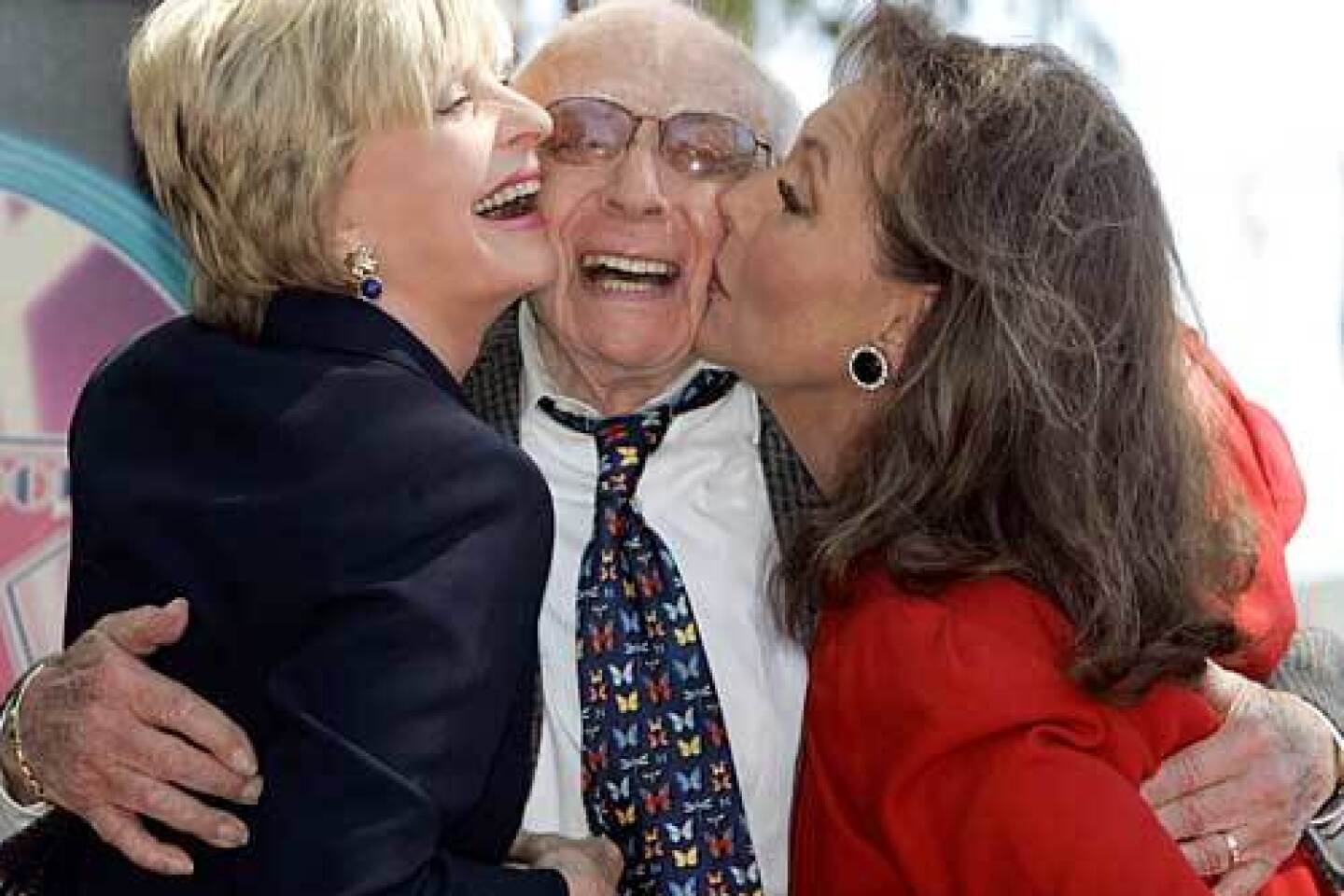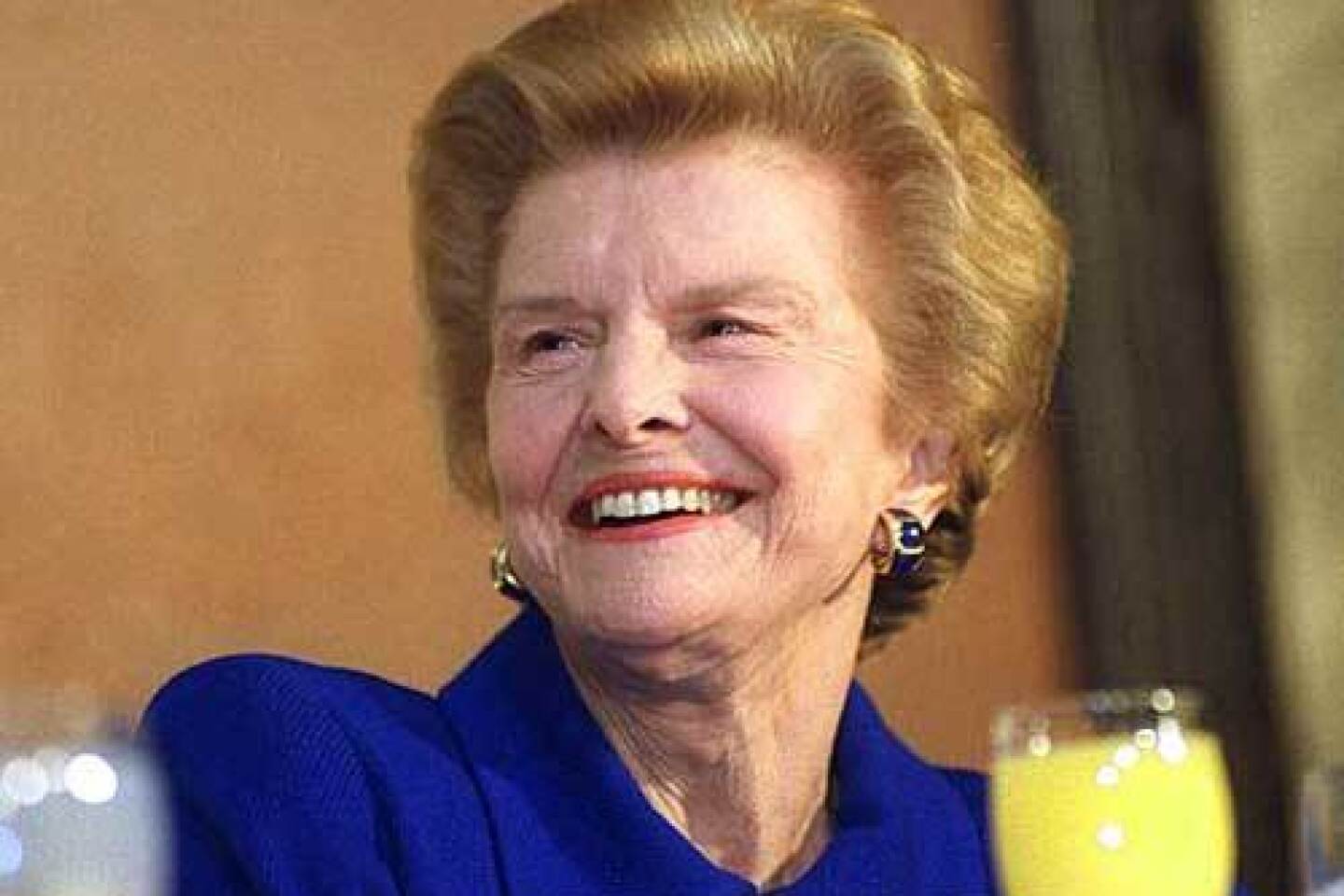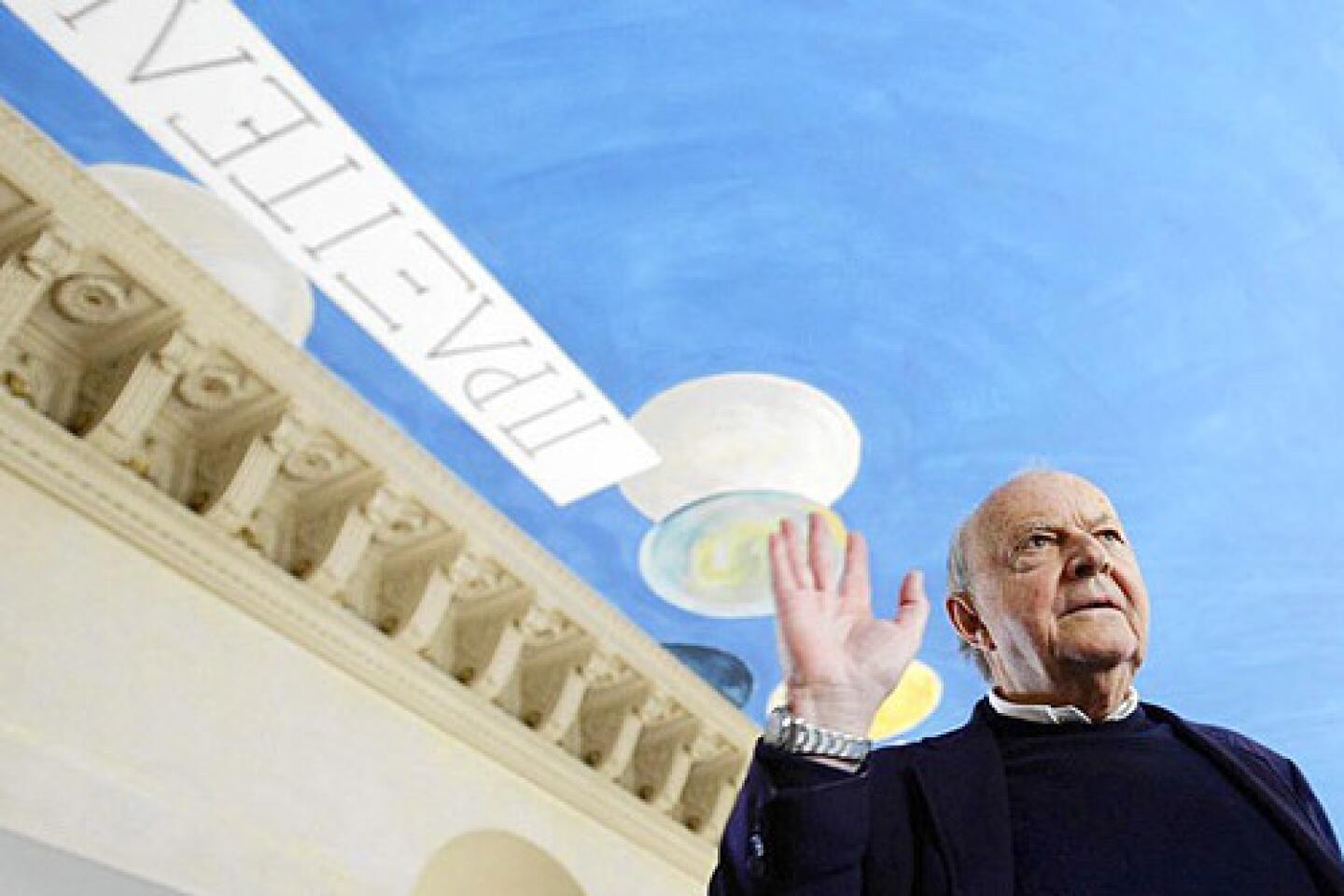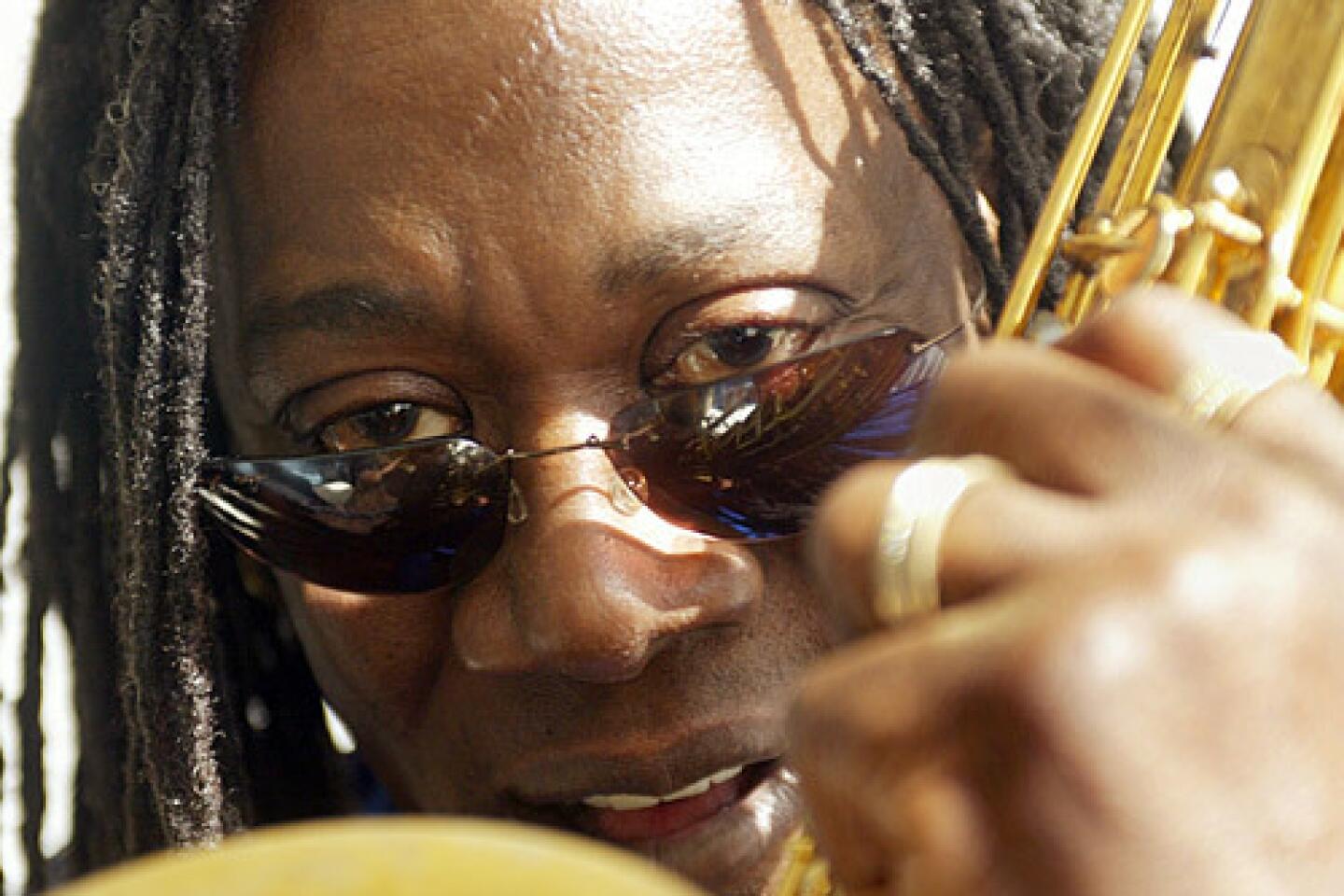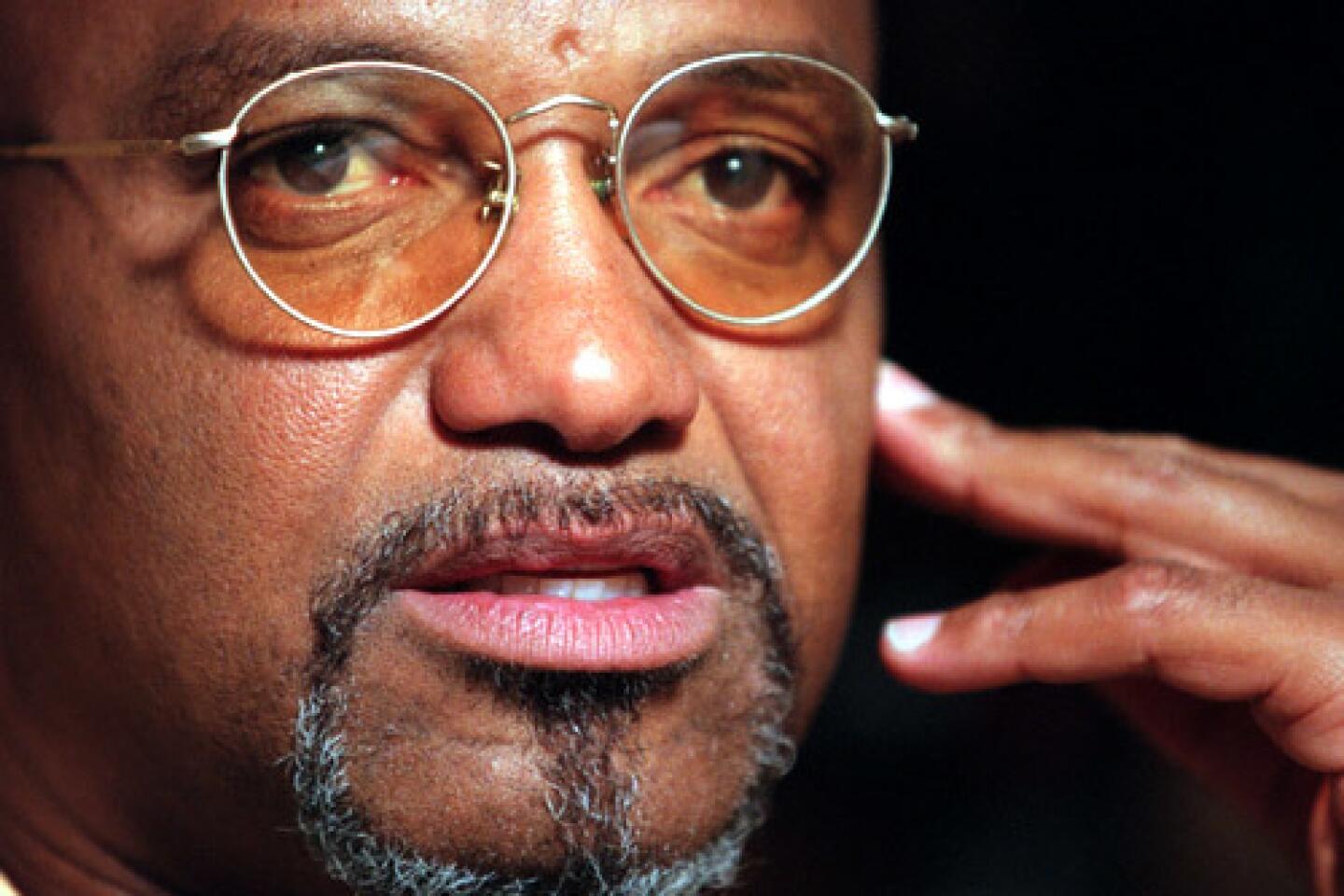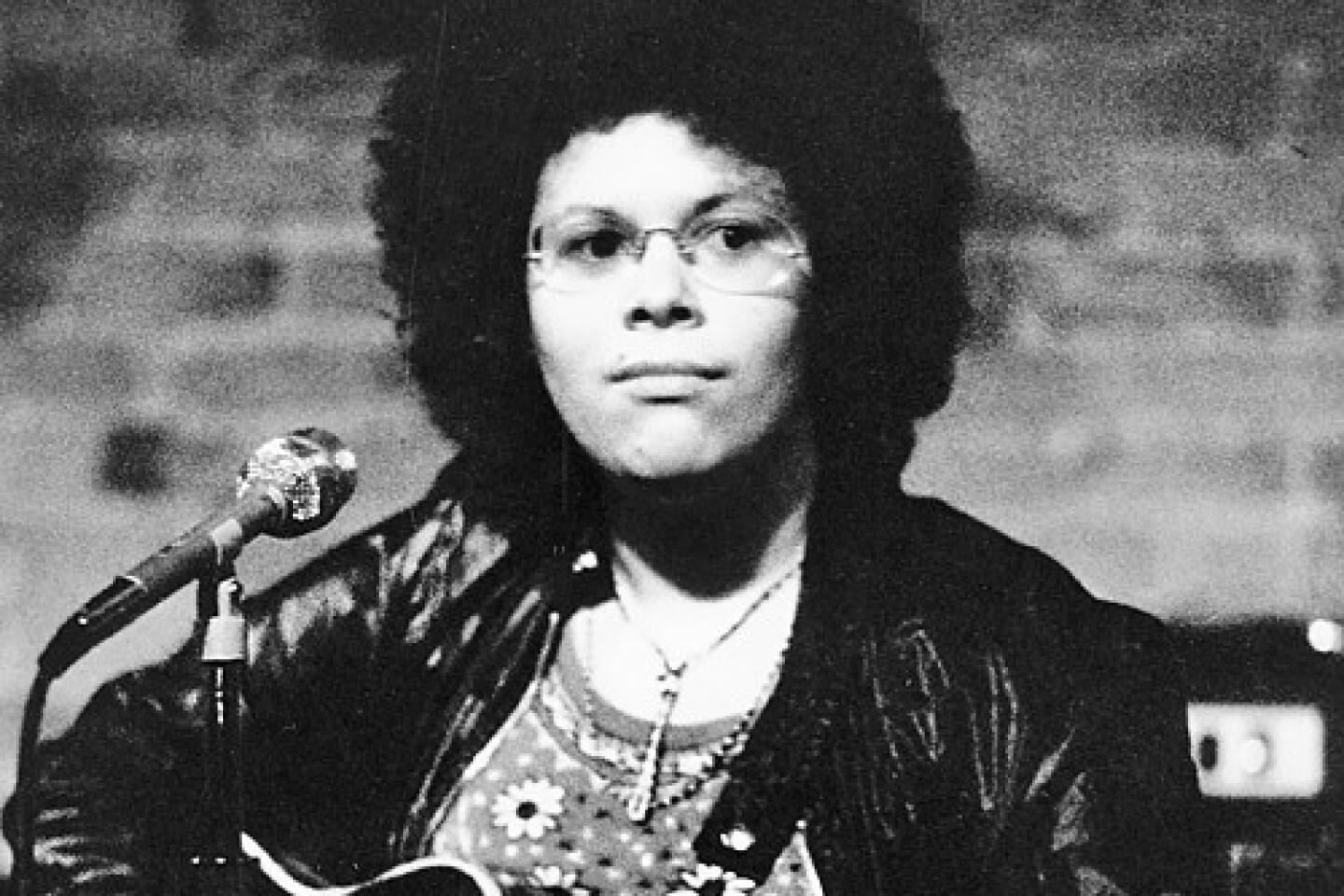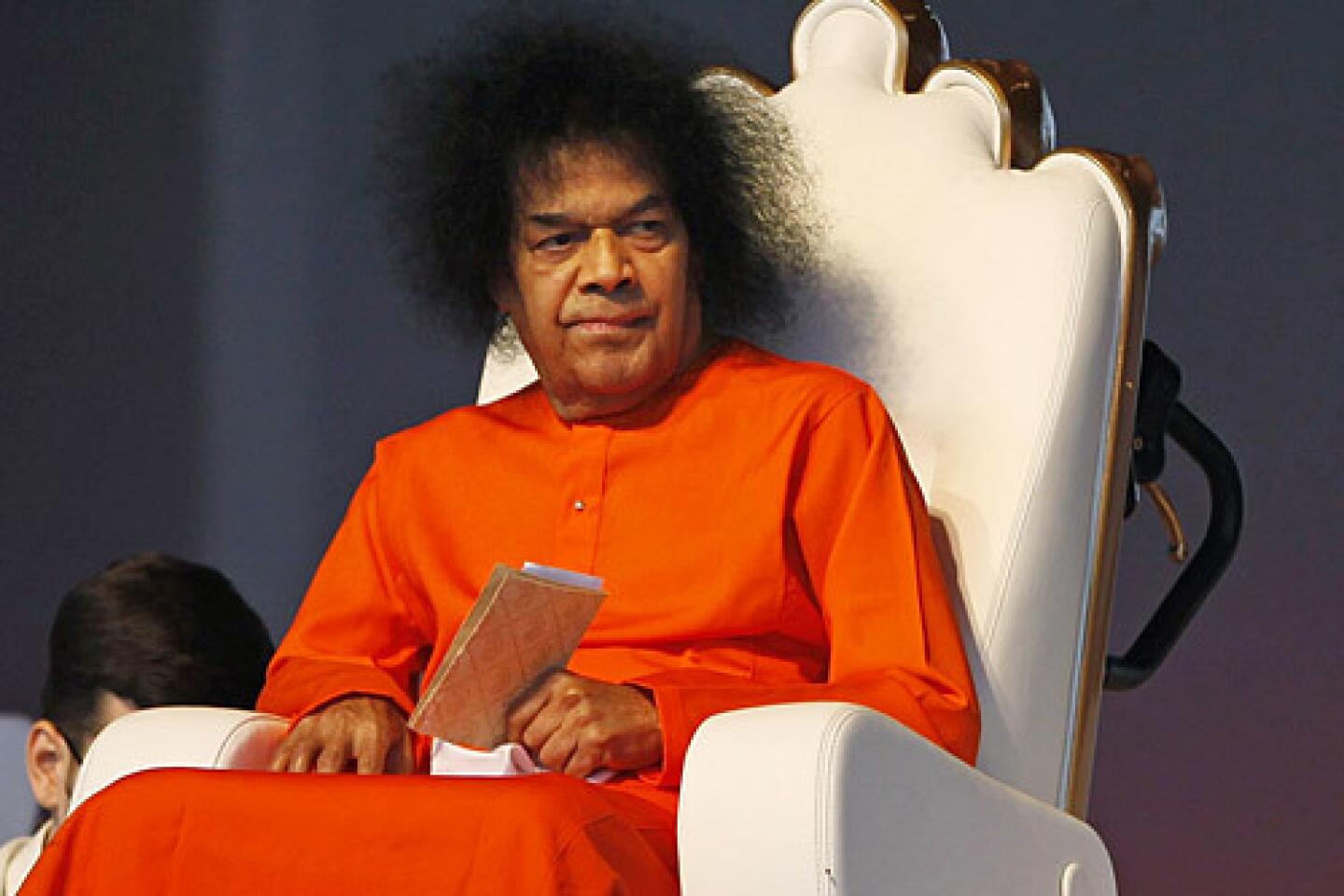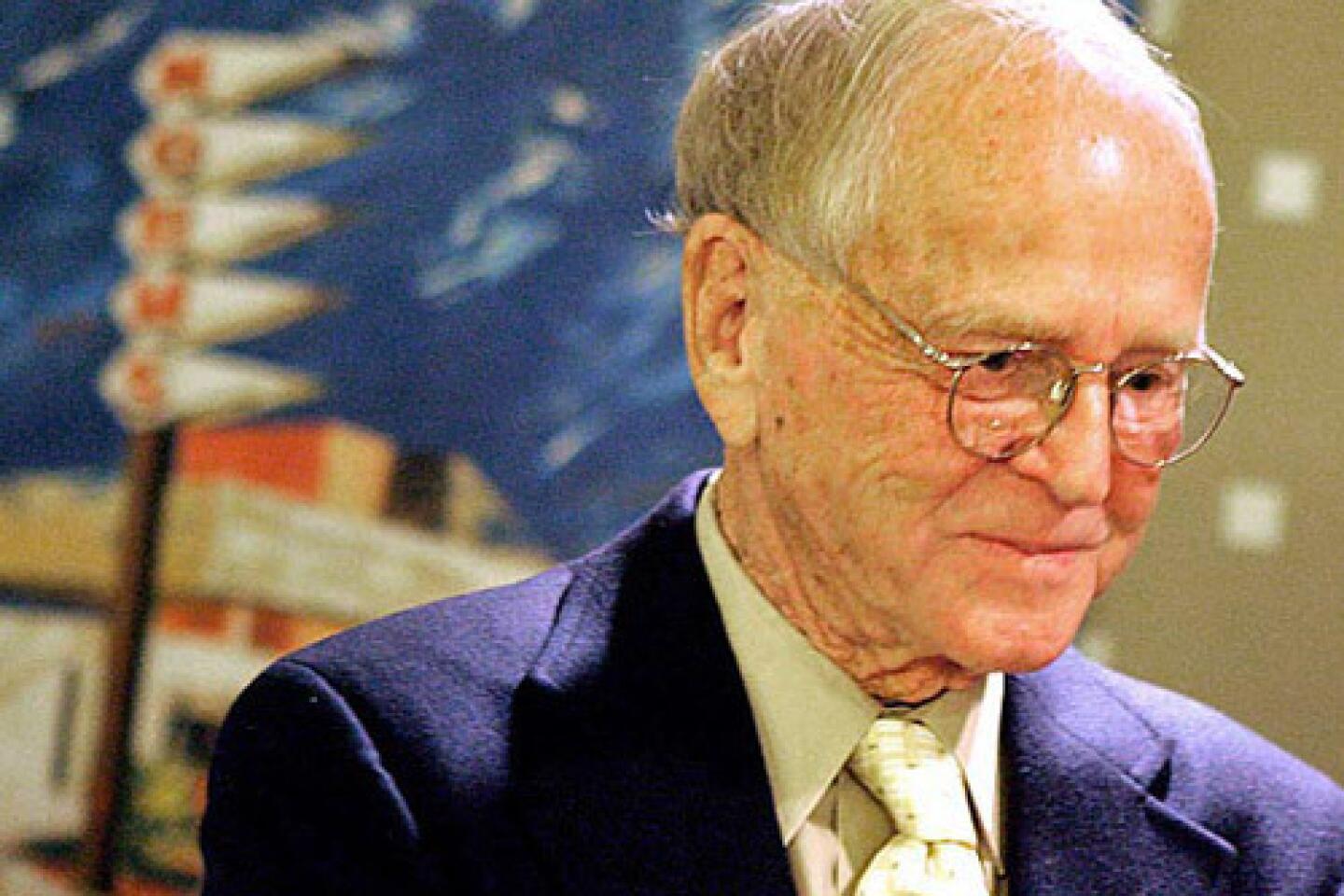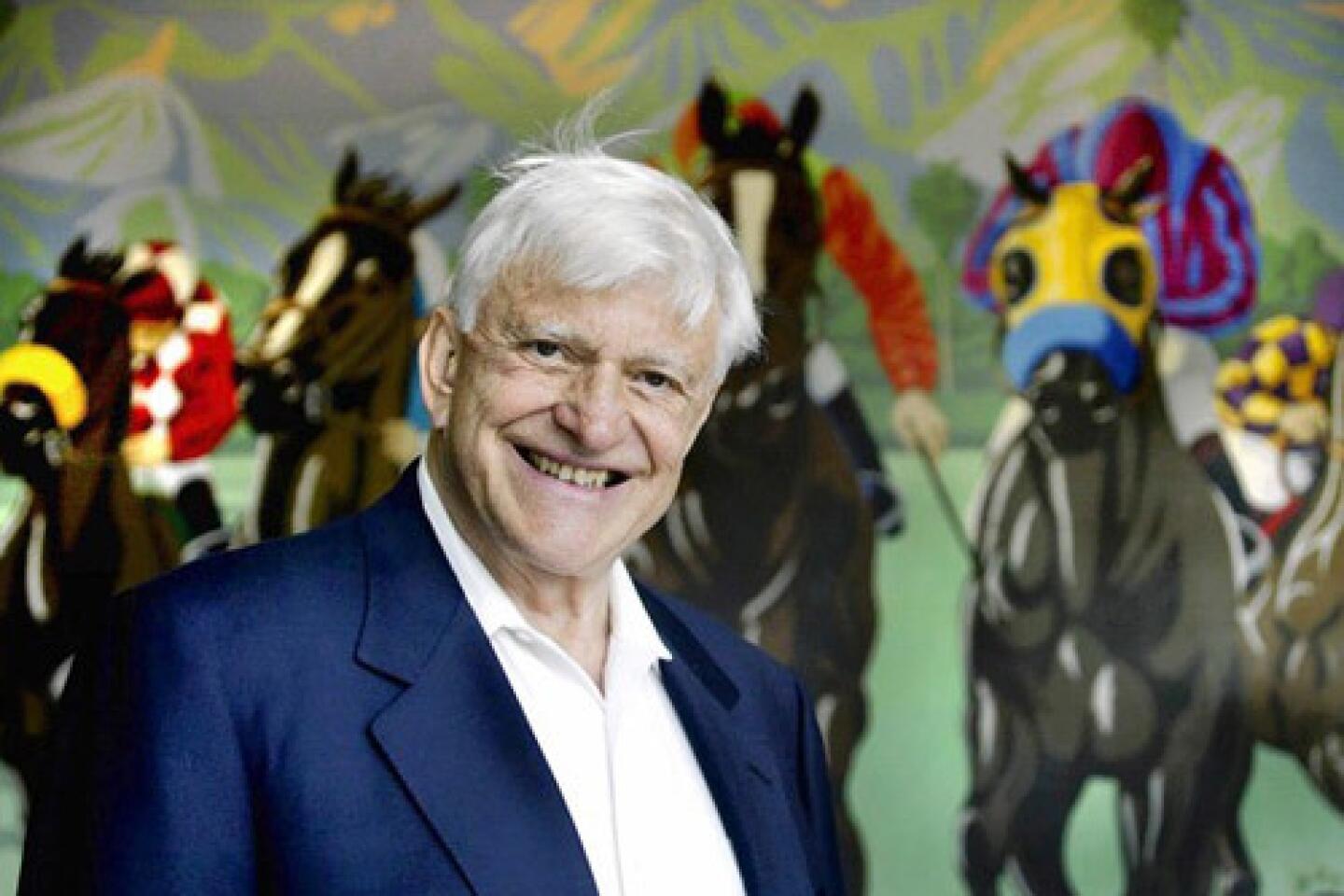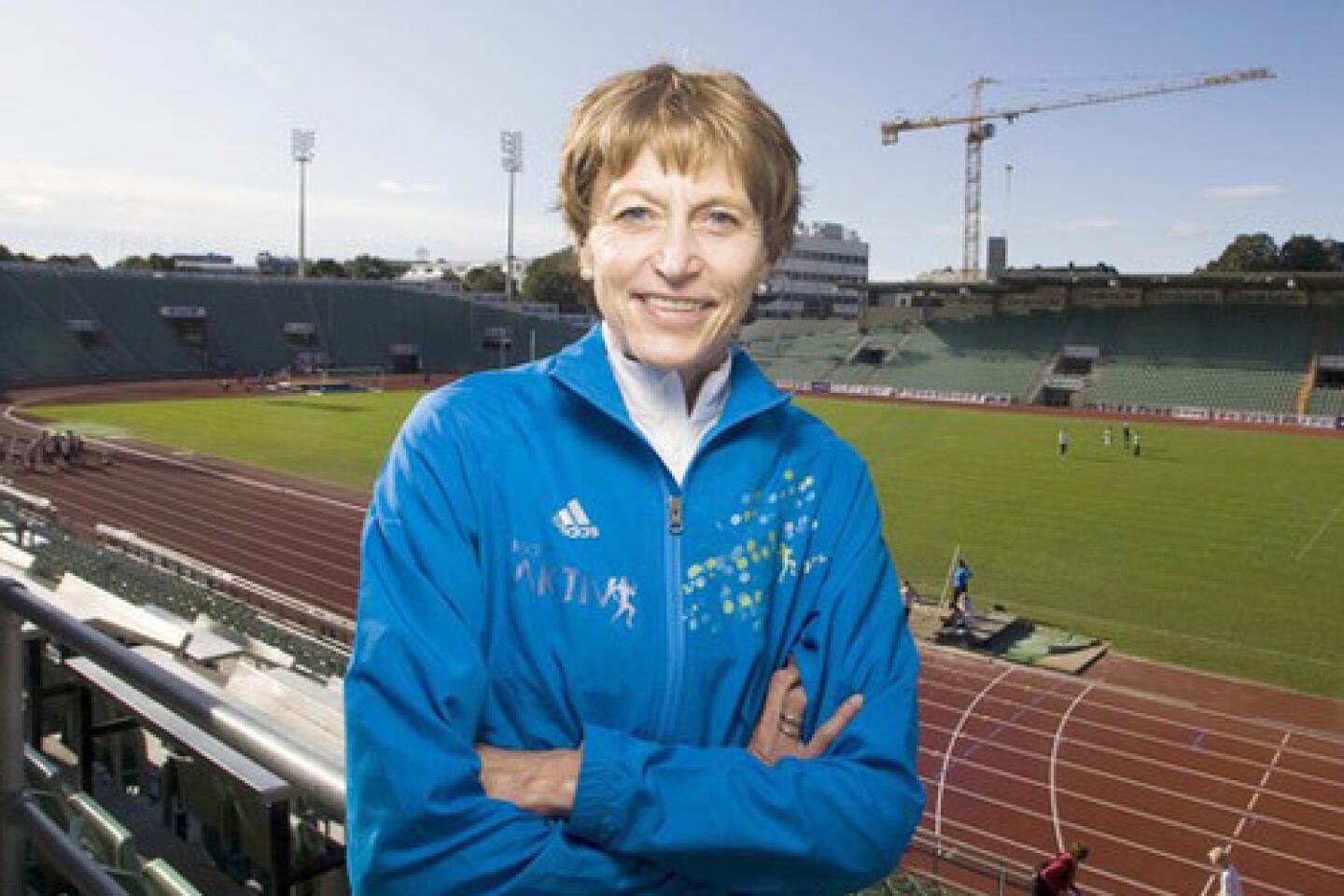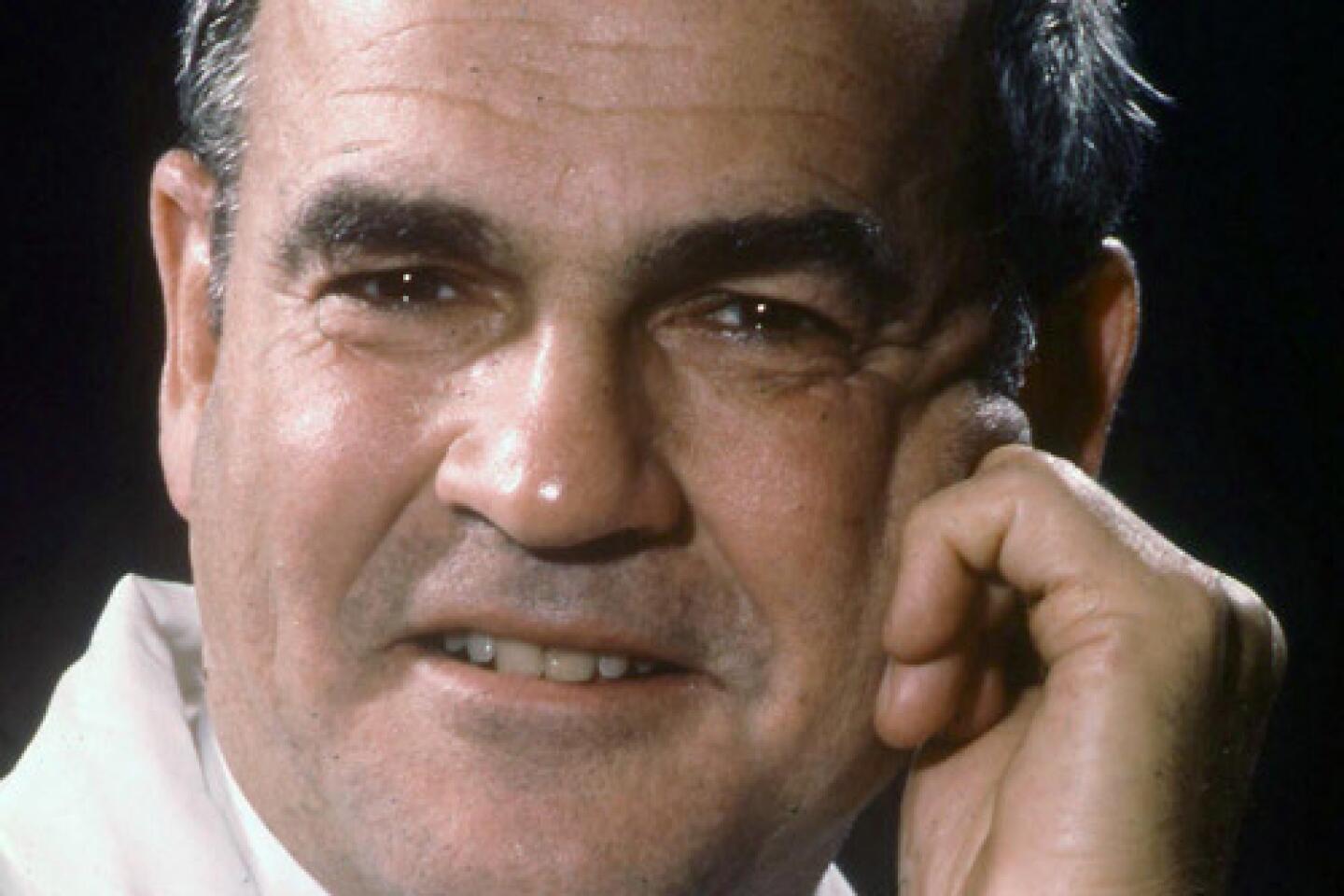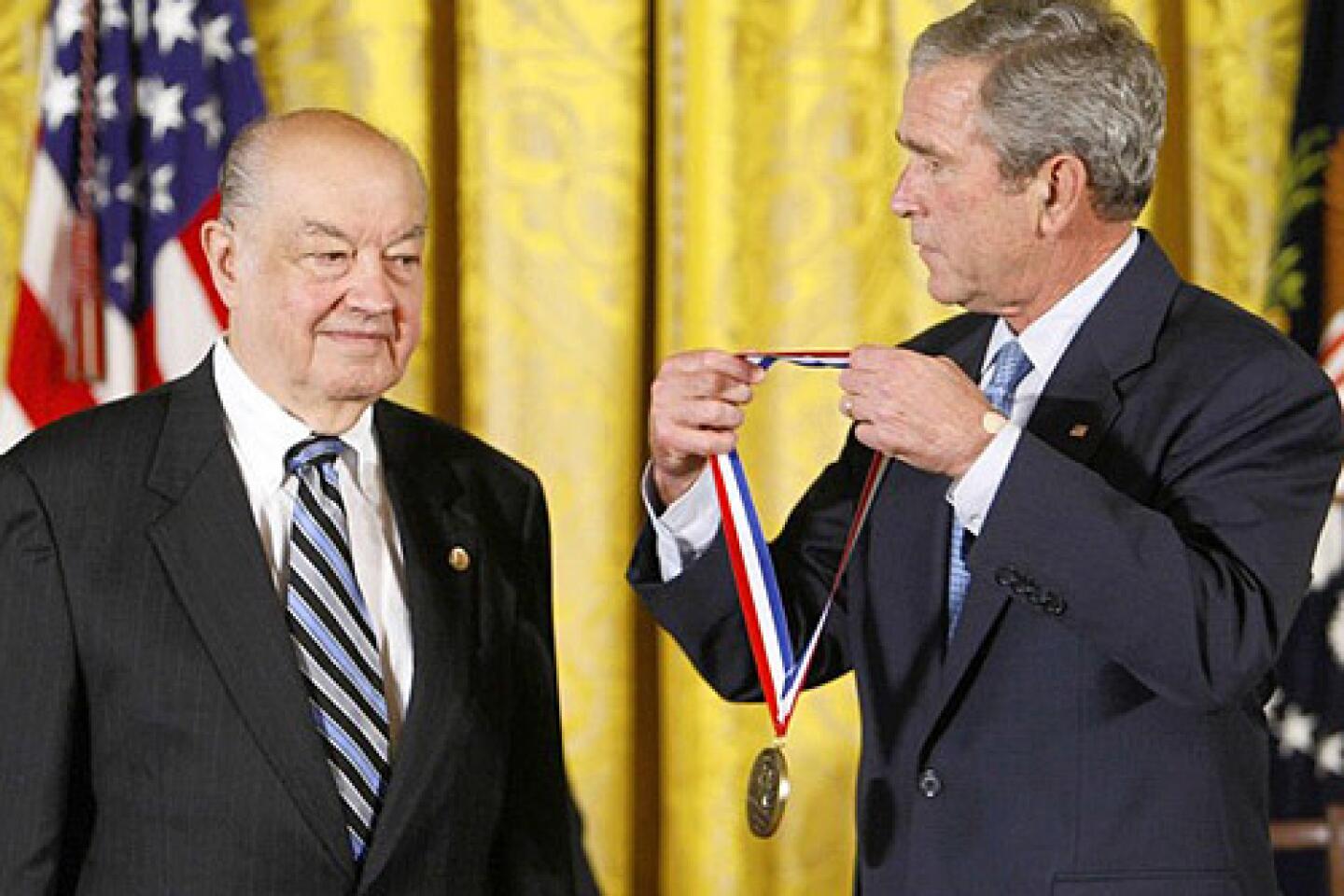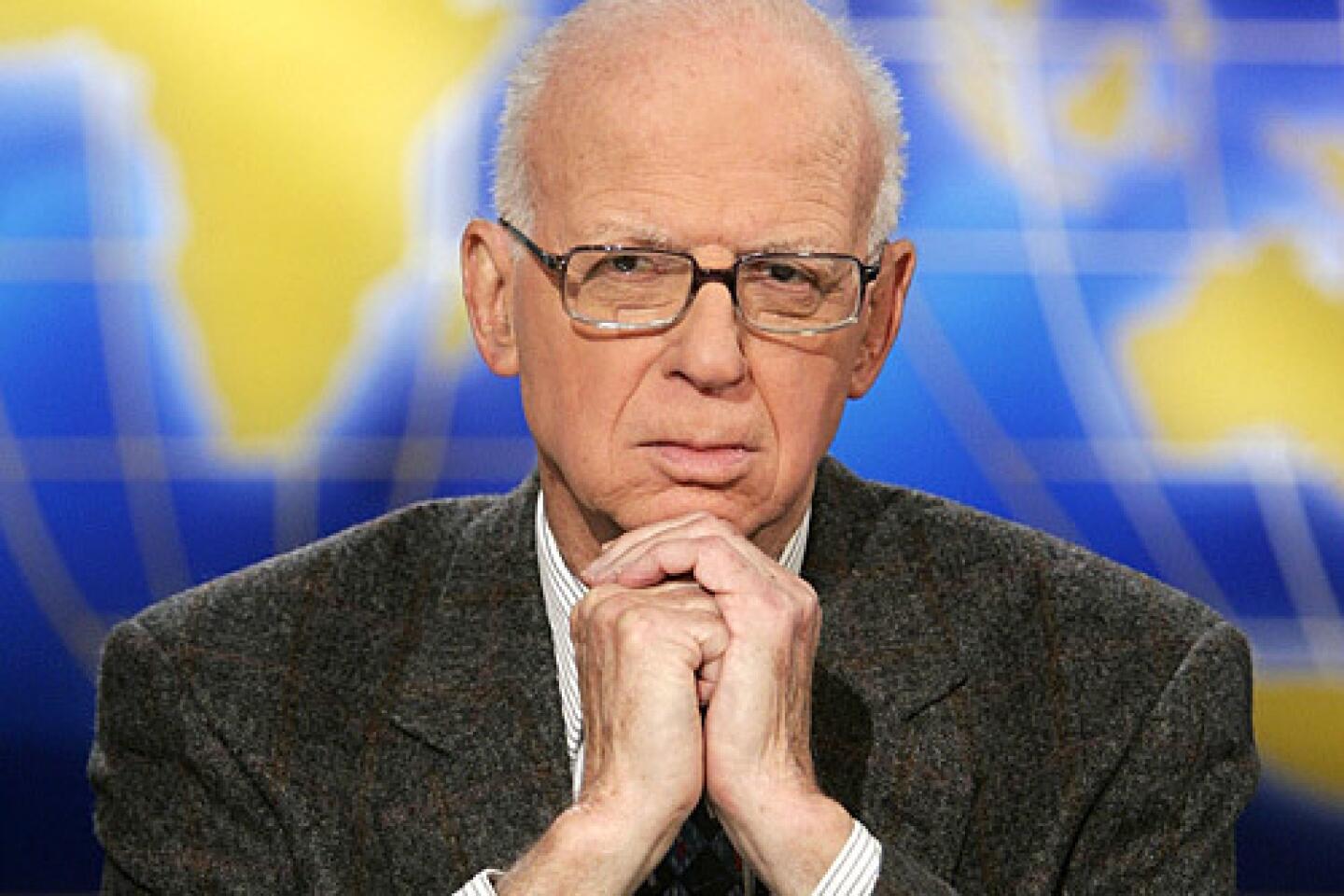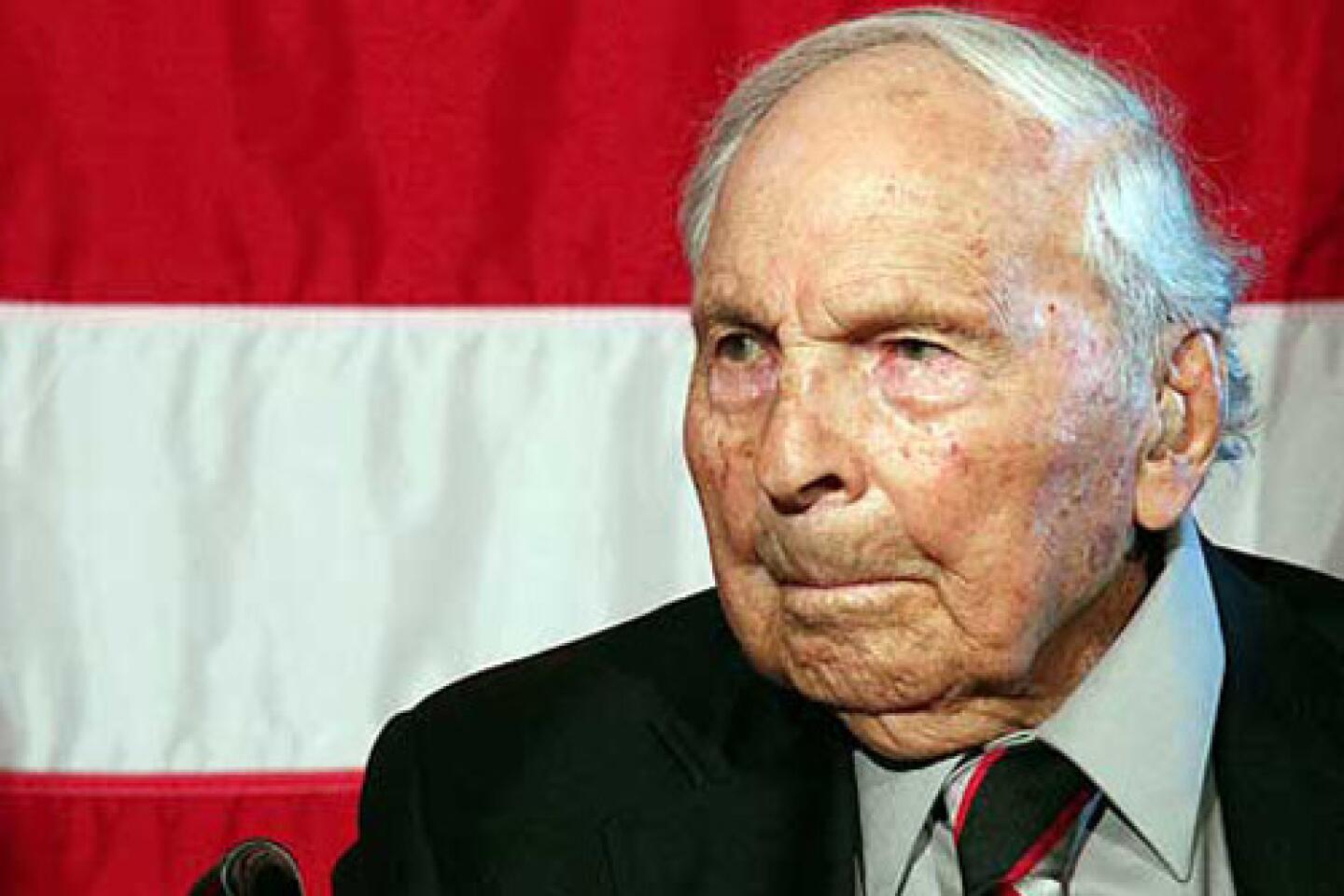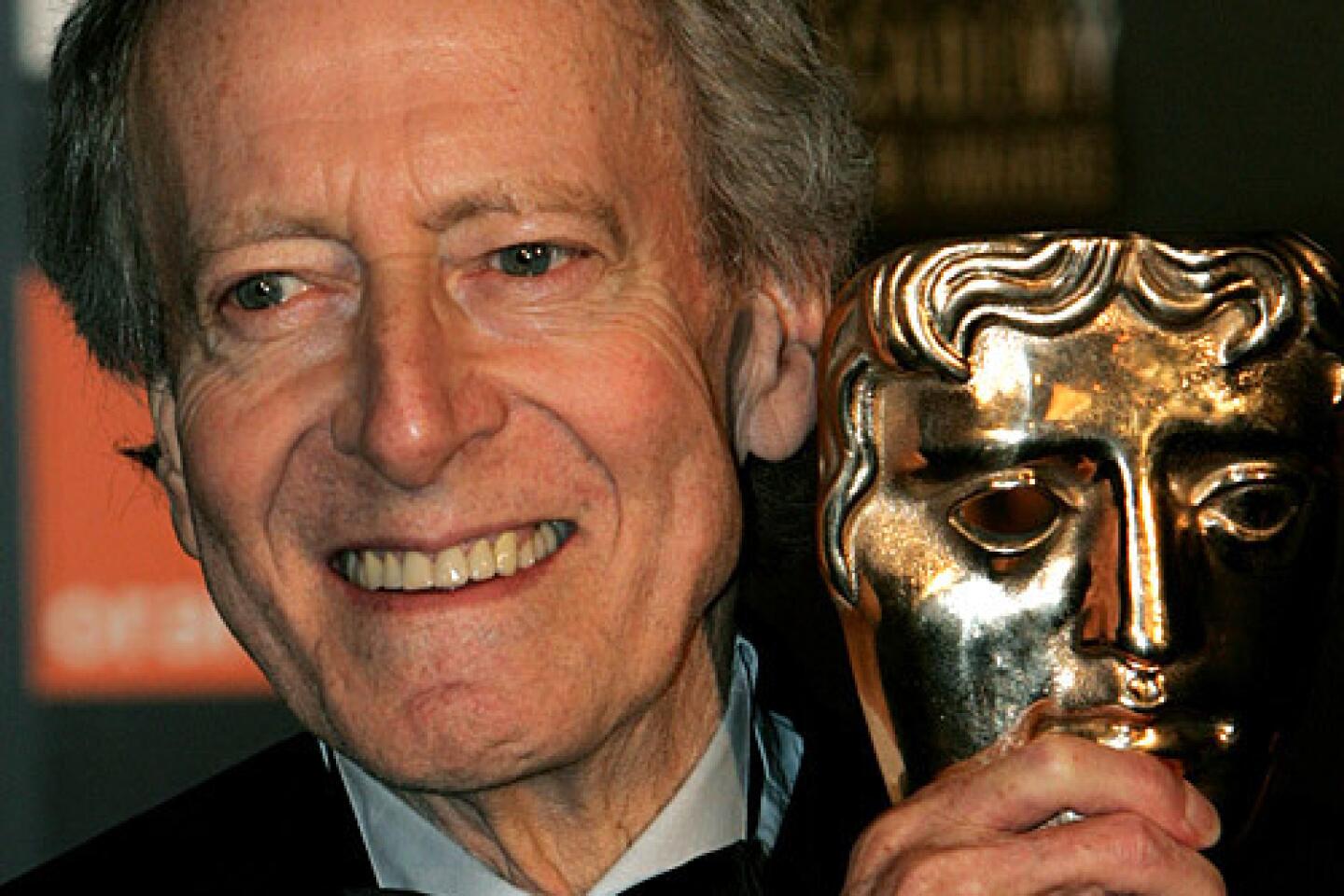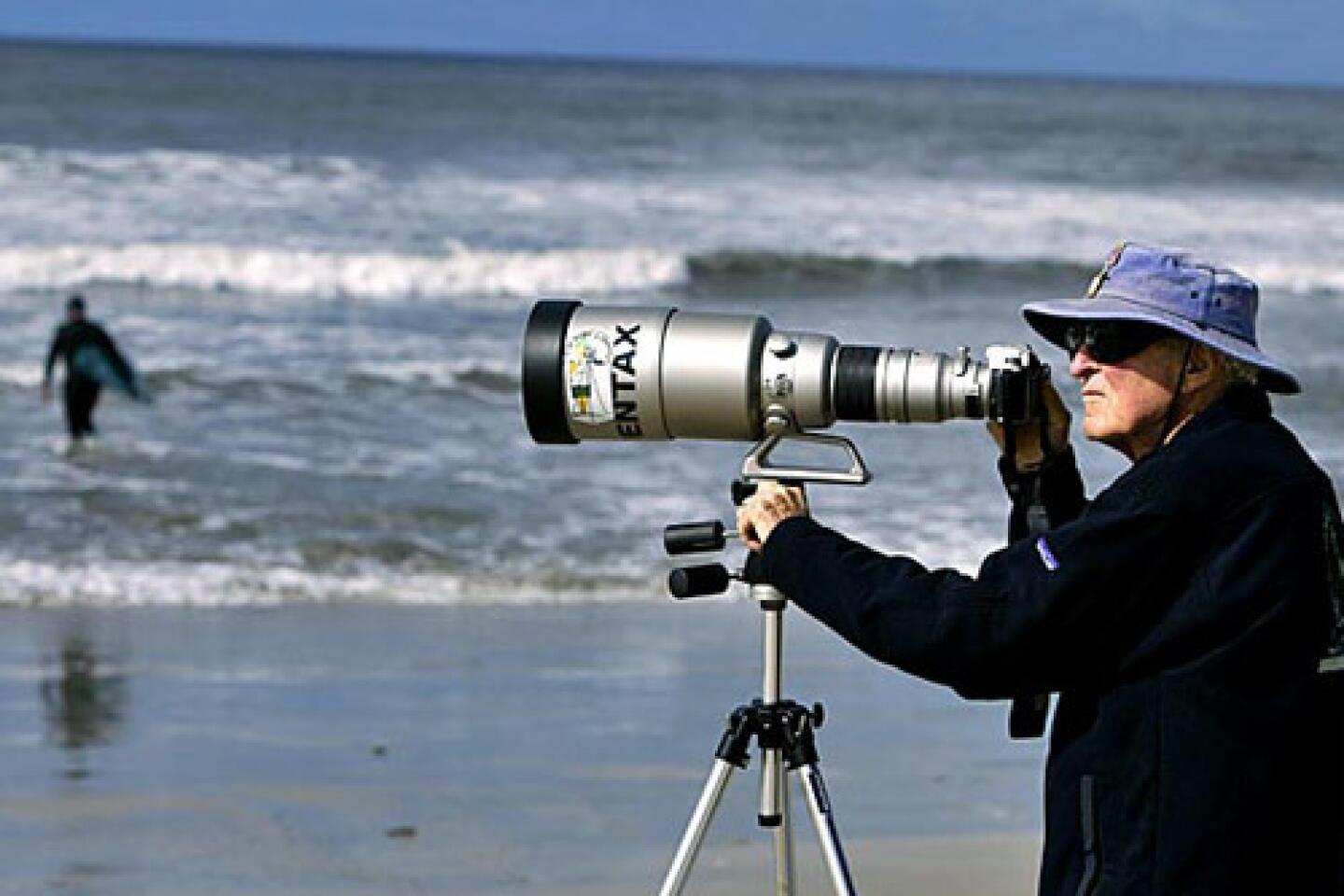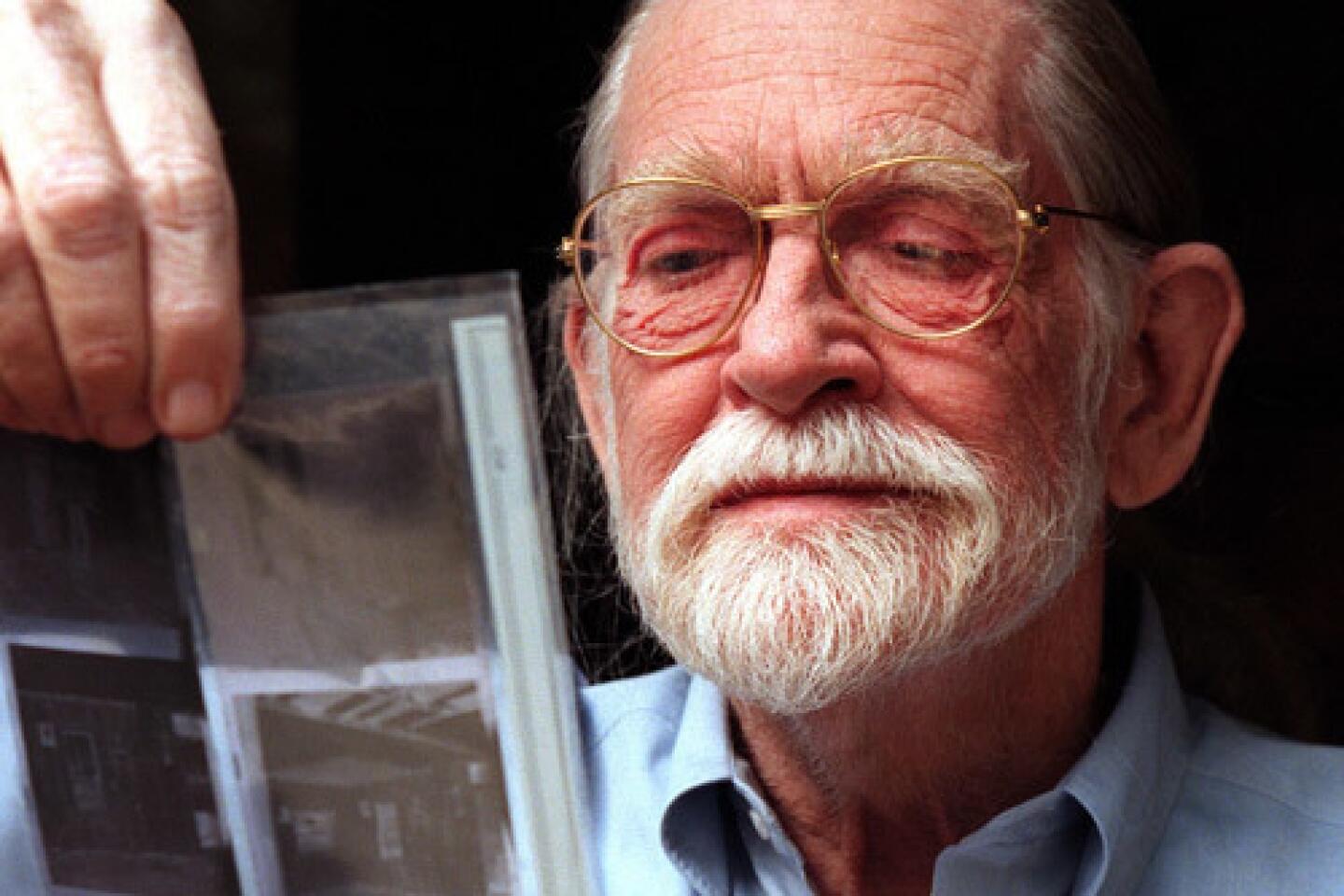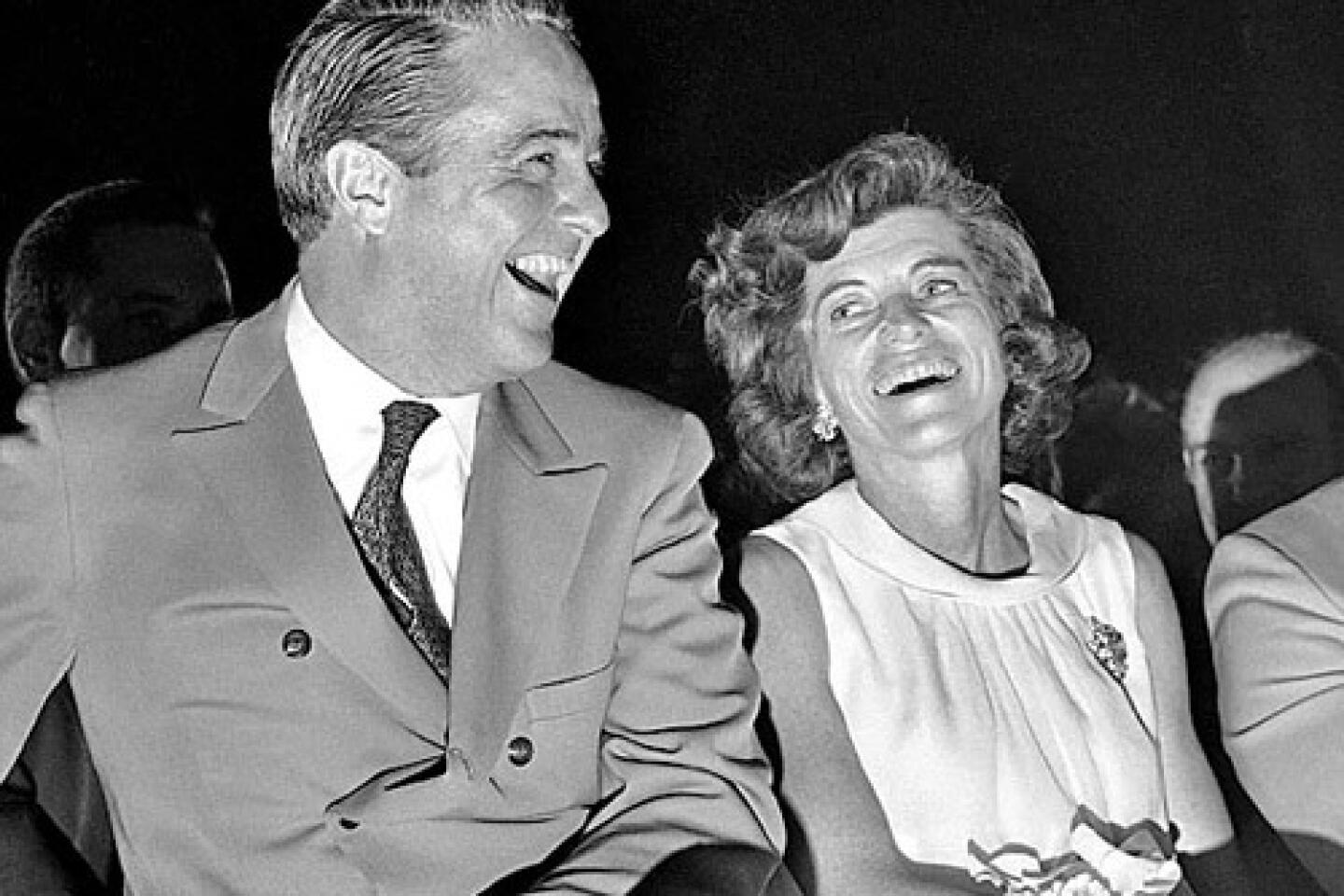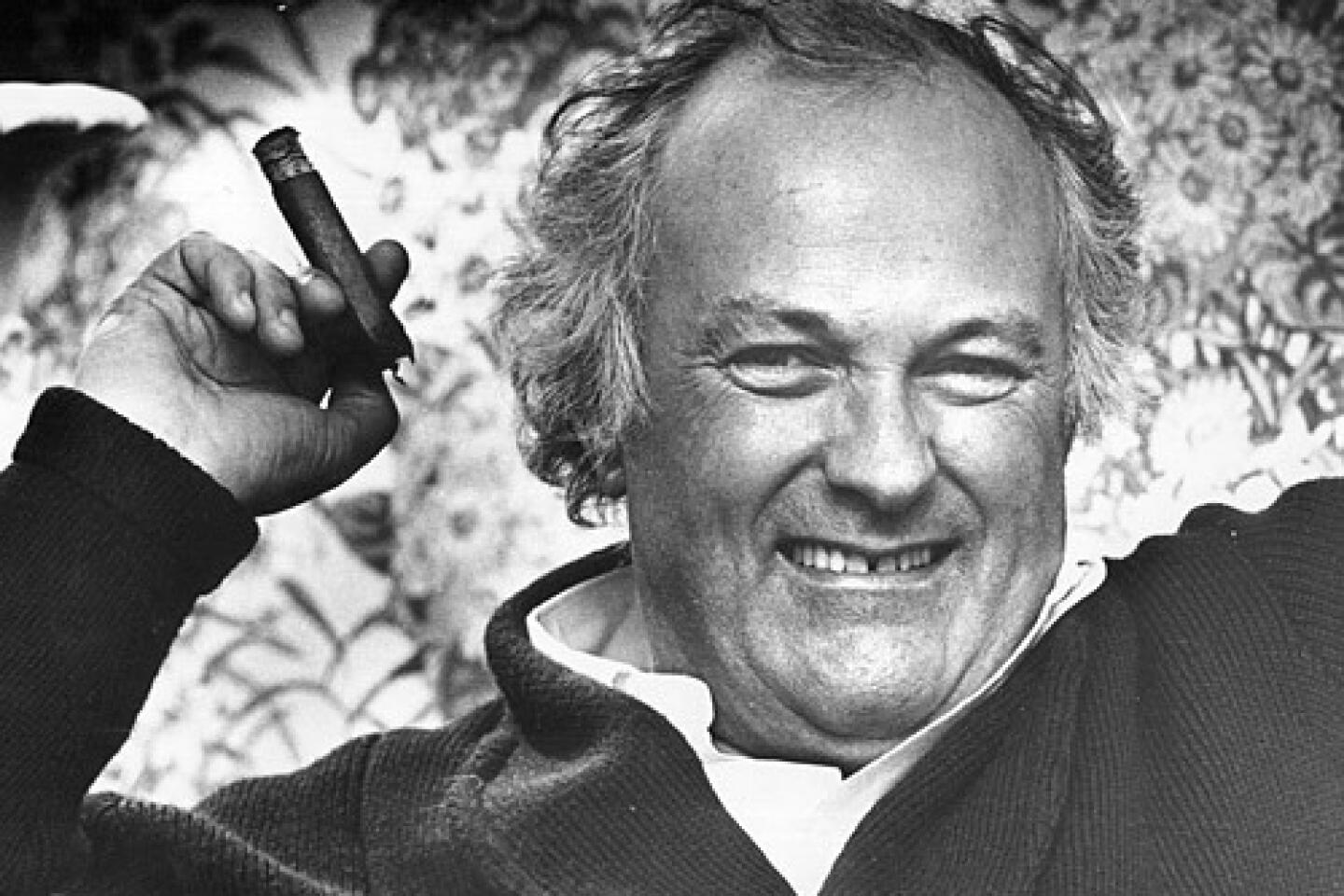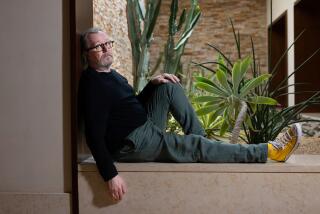Robert Easton dies at 81; Henry Higgins of Hollywood
Robert Easton, a character actor whose command of a vast array of foreign and American regional accents led to a flourishing second career as a dialect coach to Hollywood stars such as Charlton Heston and Anne Hathaway, has died. He was 81.
Often called the Henry Higgins of Hollywood, he died of natural causes Friday at his home in Toluca Lake, said his daughter, Heather Woodruff Perry.
FOR THE RECORD:
Robert Easton: The obituary of actor and dialect coach Robert Easton in the Dec. 22 LATExtra section incorrectly identified Heather Woodruff Perry as Easton’s daughter. She has advised that she was not officially adopted. —
A consummate phoneticist like Higgins, the exacting speech tutor in the musical “My Fair Lady,” Easton taught Forest Whitaker the African inflections of Ugandan dictator Idi Amin and Ben Kingsley the gruff tones of a New York mobster. He helped Arnold Schwarzenegger turn his Austrian accent into Russian English and Liam Neeson’s Irish brogue into a Kentucky drawl. He once coached Heston from a bathtub in Munich, helping the actor pronounce his lines like a Scot.
When actor Robert Duvall signed on to play Confederate commander Robert E. Lee in the movie “Gods and Generals” several years ago, he wanted Easton to help him sound authentically Virginian. The affable coach quickly became popular with the rest of the cast.
“They said, ‘We want Virginia accents,’” Duvall recalled in an interview Wednesday. “Bob said, ‘Which one? There are 12 distinct accents, from the Piedmont to the ocean.’ He knew them all.
“He was a wonderful man, a very unique personality, and a master at his craft.”
Despite recent health problems, Easton continued to coach via telephone and tape recorder. “A month ago, he did an entire script on tape for John Travolta,” his daughter said.
Born Robert Easton Burke in Milwaukee on Nov. 23, 1930, Easton developed an awareness of speech as a child struggling to tame a stutter. When he was 7, his parents split up and he moved with his mother to San Antonio. Noticing how Texans tend to draw out their speech, he trained himself to talk more slowly, which enabled him to control his stammer.
At 14, he auditioned for a spot on the popular radio program “Quiz Kids” and toured the country with the cast of child prodigies. By 18, the lanky, 6-foot-4 teenager was winning parts in Hollywood, mainly playing country bumpkins because of his thick Texas drawl. He appeared on “The Burns and Allen Show,” “Father Knows Best,” “The Jack Benny Show,” “The Red Skelton Show,” “Wagon Train,” “Rawhide” and “Gunsmoke.”
Fearful of being typecast as the slow-witted deputy or hillbilly cousin, he decided to work on different accents to broaden his opportunities. He discovered he had a facility for mimicking regional speech patterns.
In 1961, after marrying June Grimstead, he moved with her to her native England and began studying phonetics at University College in London. He had absorbed a number of European accents by the time he returned to Hollywood three years later. Fellow actors, impressed by his new ability, asked him to teach them. Before long, he had a side business as an accent tutor that quickly grew into his main occupation.
He learned over the years to adapt to his clients’ different learning styles. He found some actors, such as Robin Williams, had strong auditory ability and could pick up accents by listening and repeating.
Others were more visual and needed to work with phonetic scripts. “He found a way to spell things,” said Whitaker, who called Easton an artist who understood the vibration and power of words. “We established our own language.”
Still others were more physically inclined, such as Patrick Swayze, who had been trained in dance. For that type of student, Easton told the Chicago Tribune in 1992, “I talk to them about the difference in mouth position, what happens with the vocal cords, how it makes the voice more or less nasal.”
He expanded his repertoire during his foreign travels, absorbing the speech rhythms of local cabdrivers, shopkeepers and hotel guests. He often enlisted his wife in his studies, motioning her to continue chatting up an unsuspecting subject while he took notes.
His wife died in 2005 after 44 years of marriage. He is survived by his daughter and a granddaughter.
Wherever Easton went, he prowled bookstores, eventually turning his home into a linguist’s paradise with an estimated 500,000 volumes about the languages and cultures of the world. Bags and boxes of books spilled into every conceivable corner, as well as a few surprising places.
“He had two ‘retired’ cars in the driveway,” his daughter said. “Guess what’s inside them? He was a bit eccentric about his books.” She hopes to establish a library to make them available to actors and scholars.
In between his coaching assignments, Easton taught at UCLA and USC. He also continued to work as an actor in movies such as “Paint Your Wagon,” “Pete’s Dragon,” “Pet Sematary II” and “Primary Colors.”. He played a Klingon judge in “Star Trek VI: The Undiscovered Country” (1991).
As a dialect coach, he also worked with non-celebrities, such as the New York lawyer who was losing cases in California because juries, hearing his nasal, rapid speech, judged him slick and impatient. After he learned to speak more slowly and improve his tonal quality, he started winning cases, according to Easton.
In one of his toughest assignments, the dialect doctor helped Japanese actress Yoko Shimada in the TV miniseries “Shogun.” She spoke no English and turned words like “order” into “odor,” but after three weeks of work with Easton she re-recorded her mangled pronunciations and went on to win a Golden Globe award in 1981.
“I’m a great believer in the principle that there’s no wastage in the universe,” Easton told The Times in 1992. “So when I work with somebody who is foreign who’s trying to lose their accent, I can always give their old dialect to somebody else.”
A memorial service will be announced later.
More to Read
Start your day right
Sign up for Essential California for the L.A. Times biggest news, features and recommendations in your inbox six days a week.
You may occasionally receive promotional content from the Los Angeles Times.
